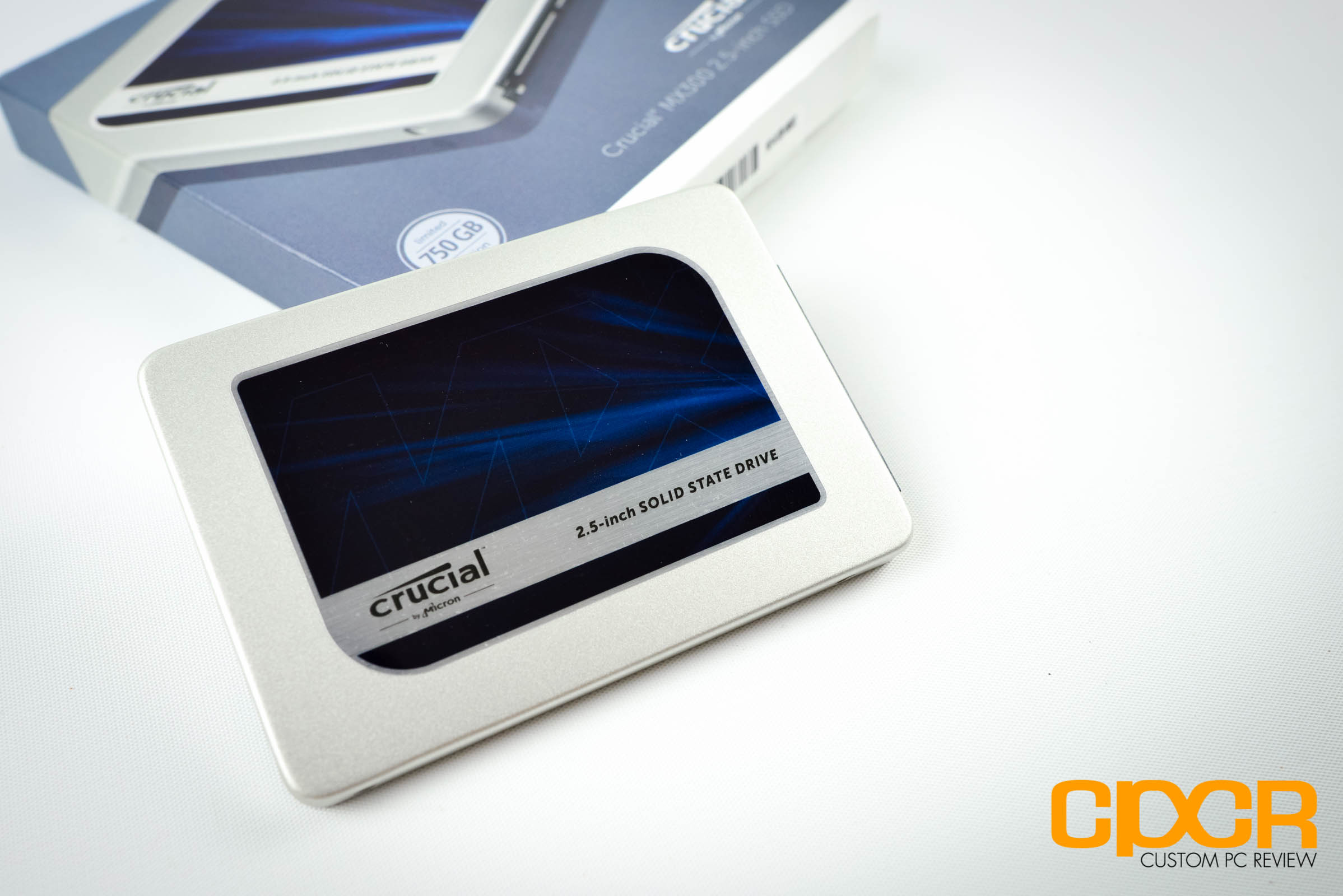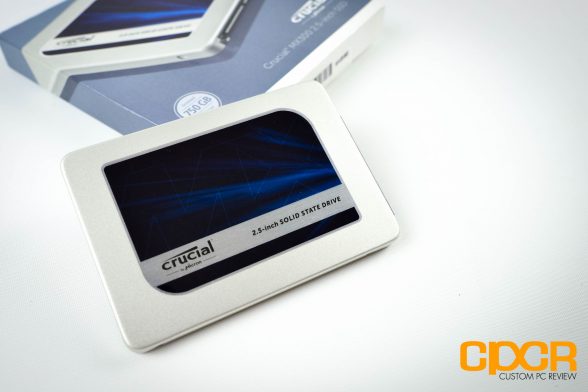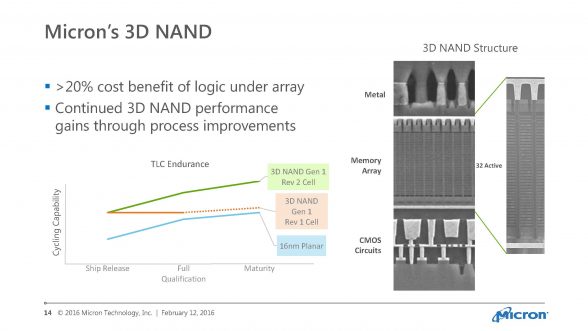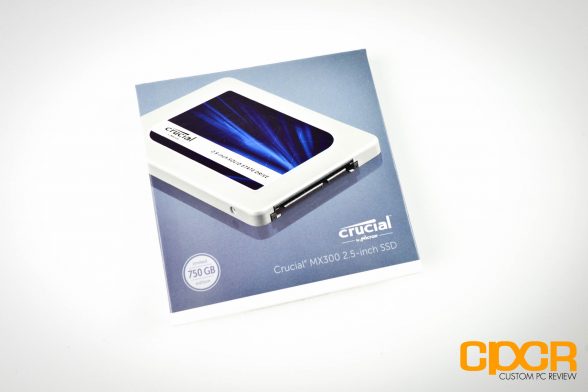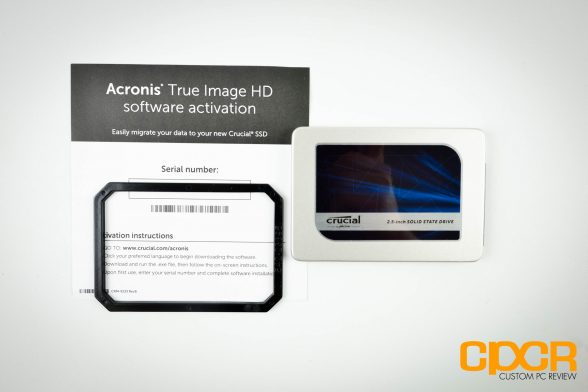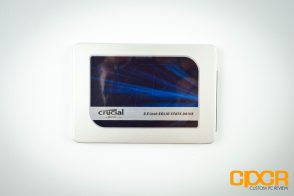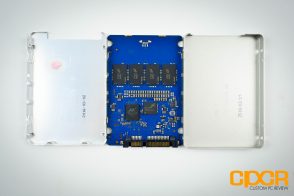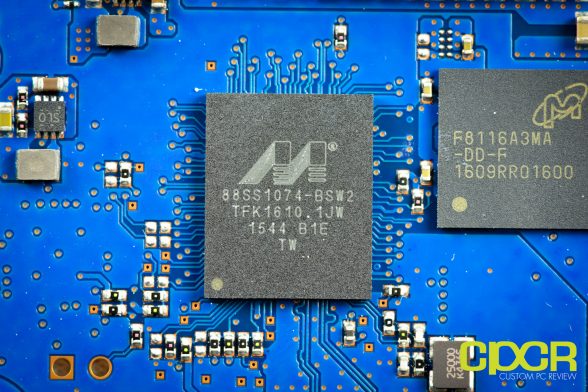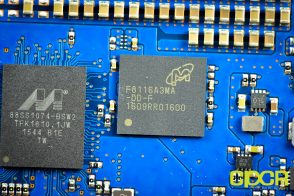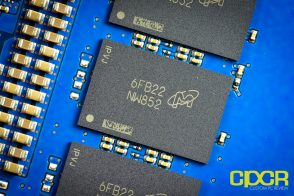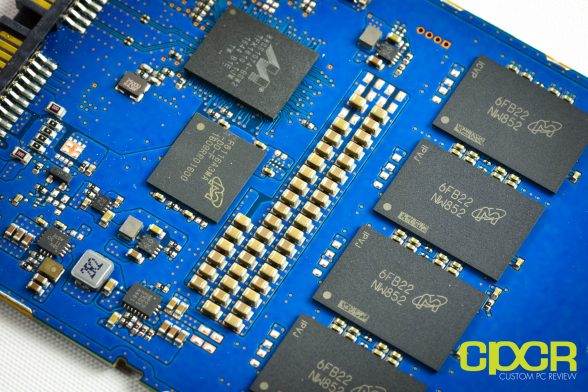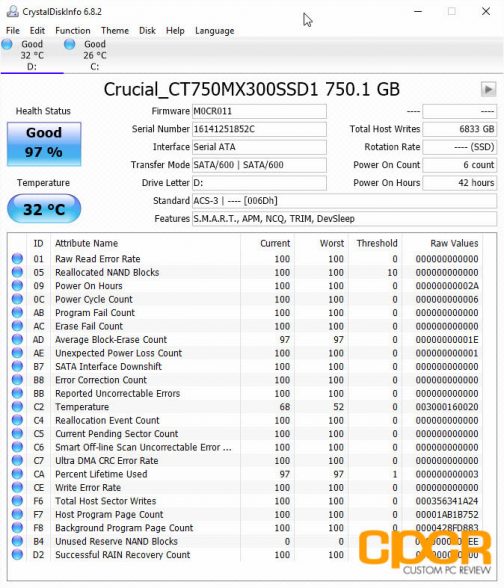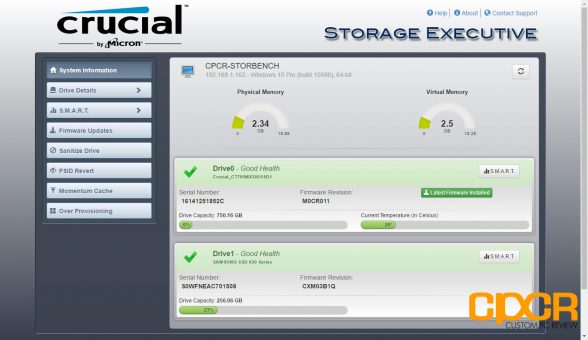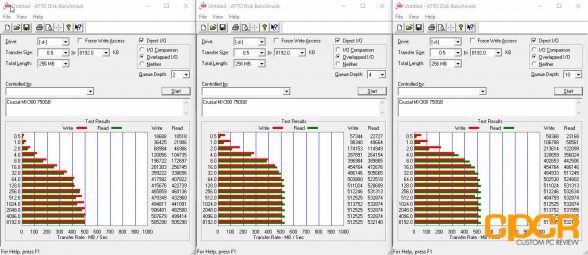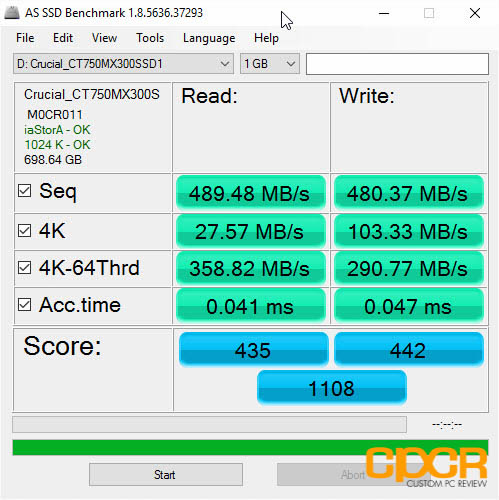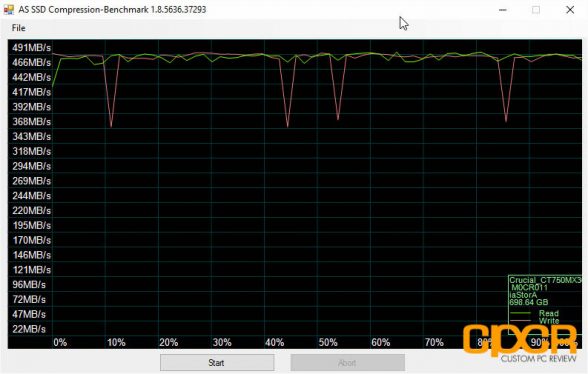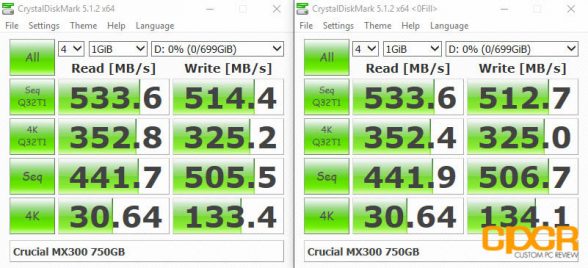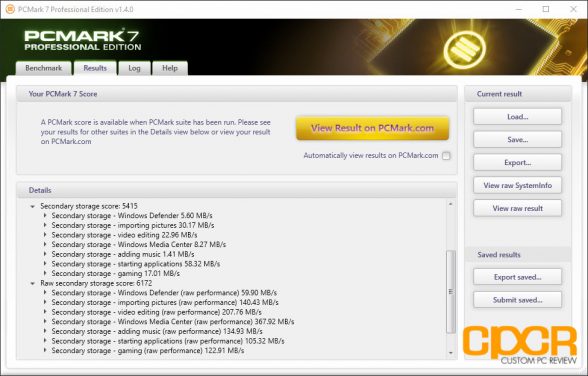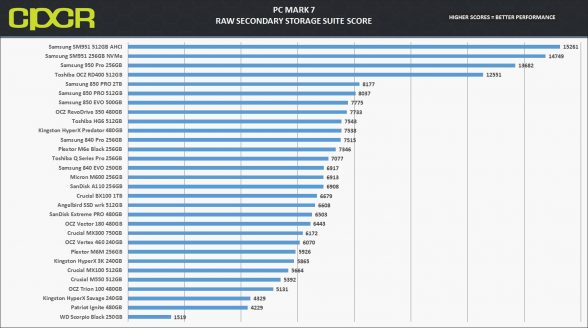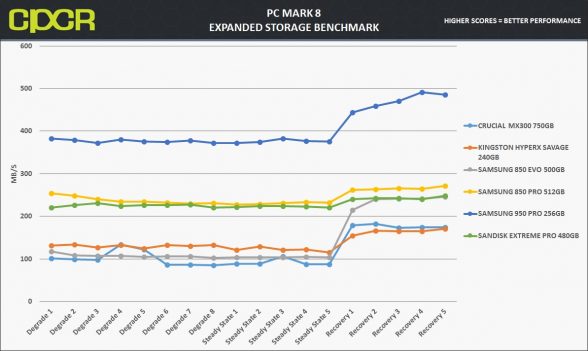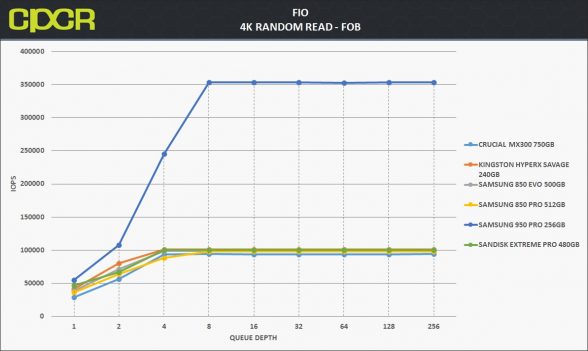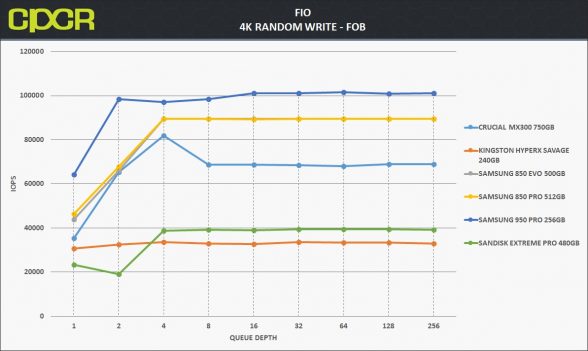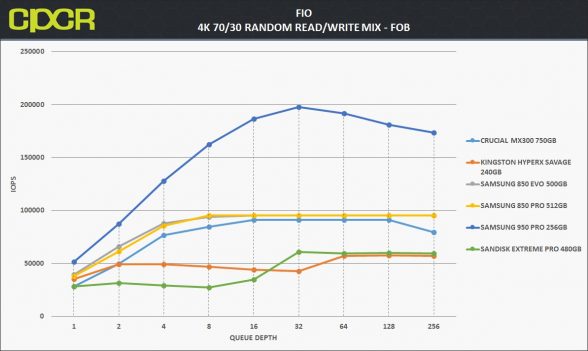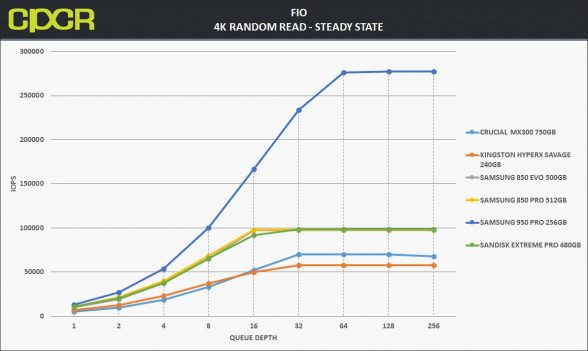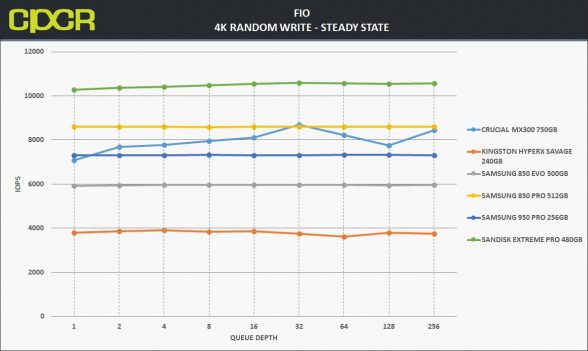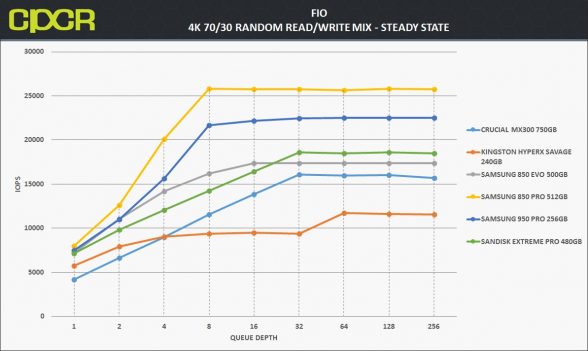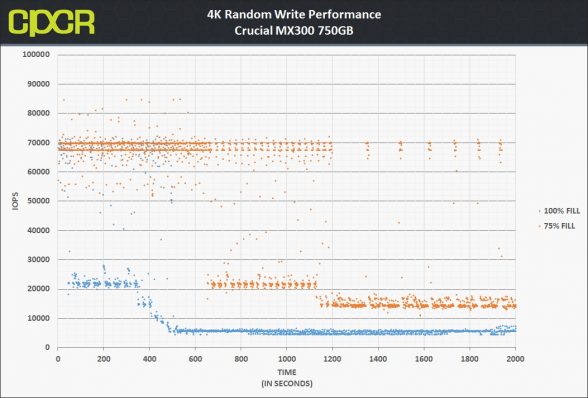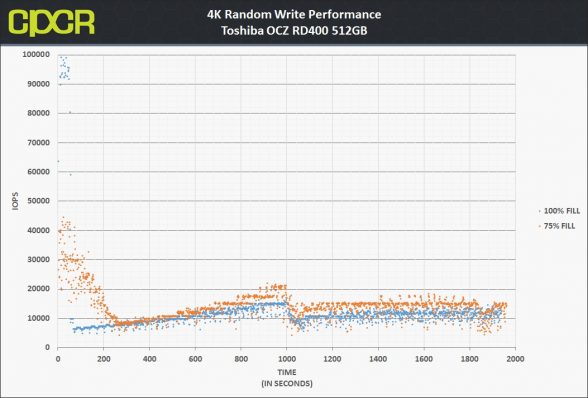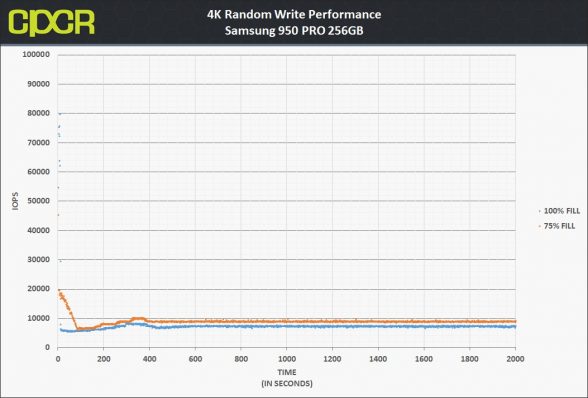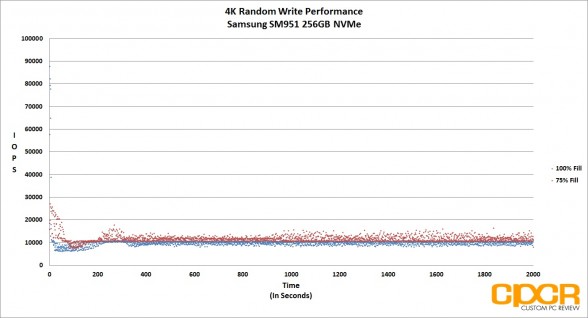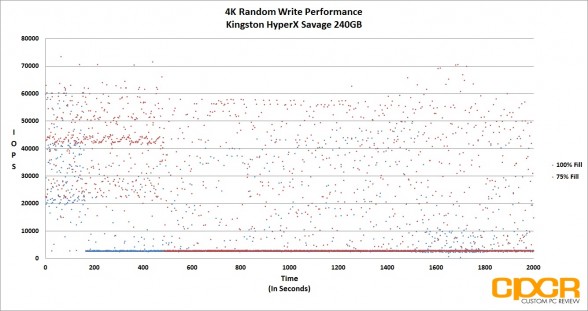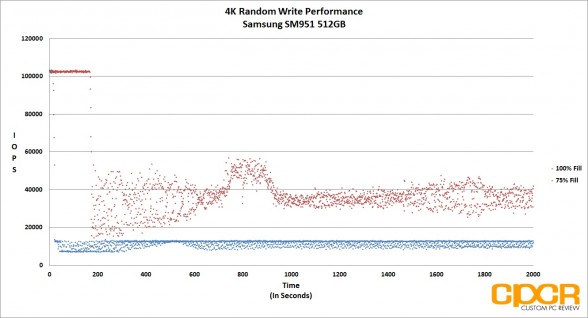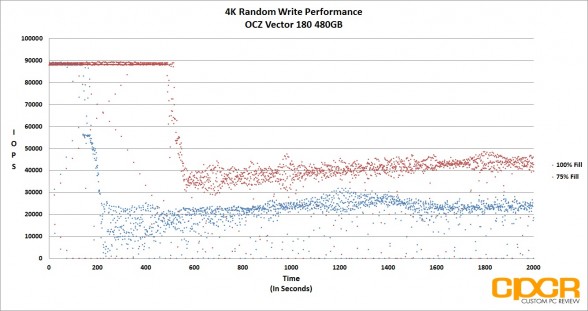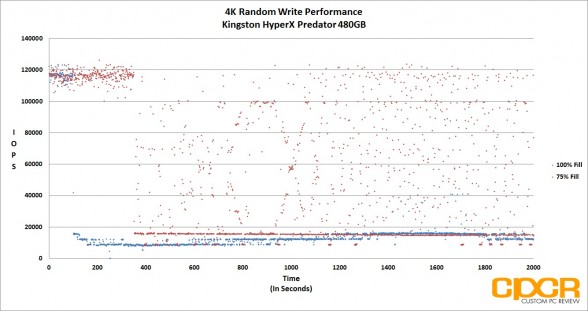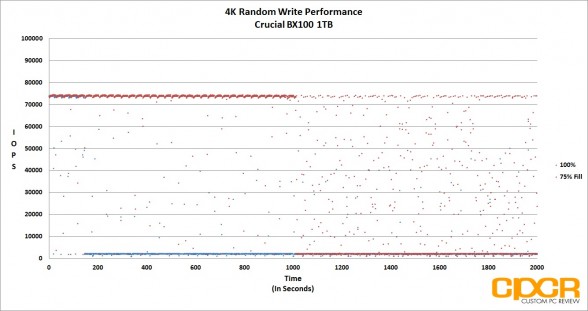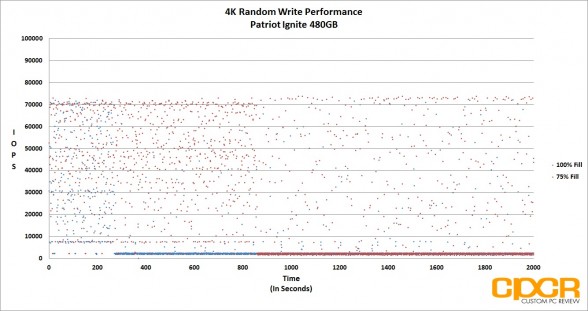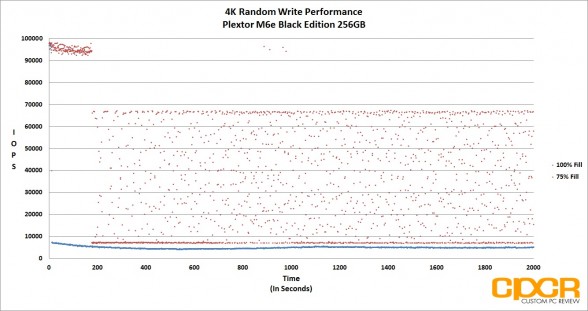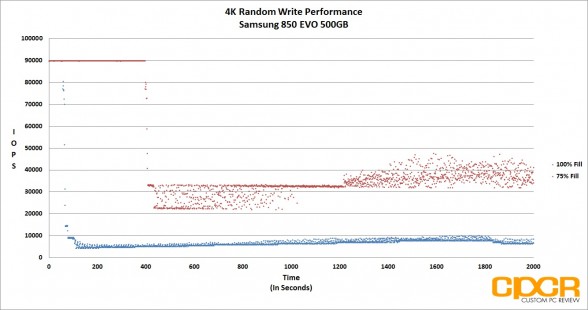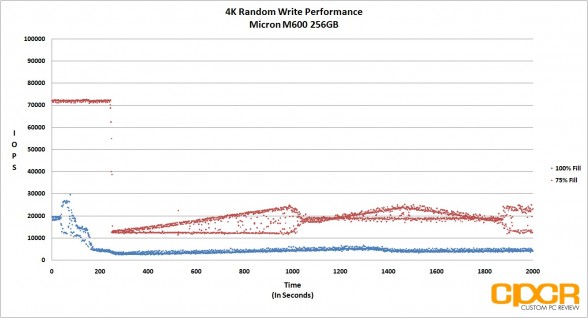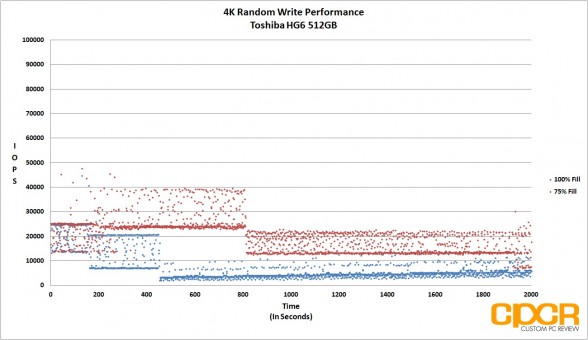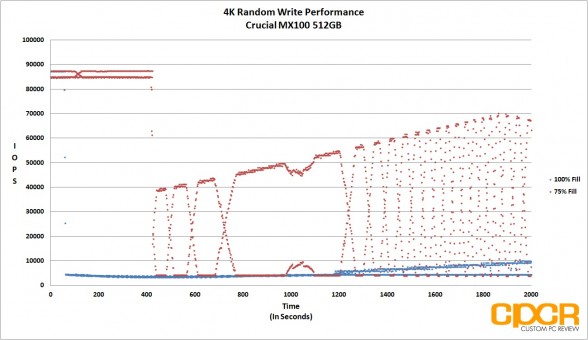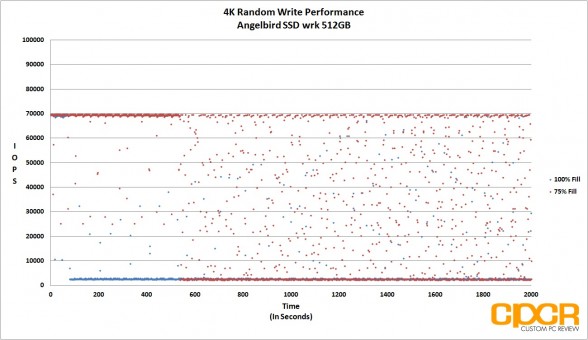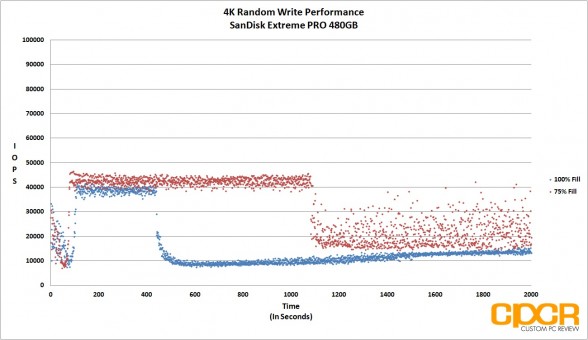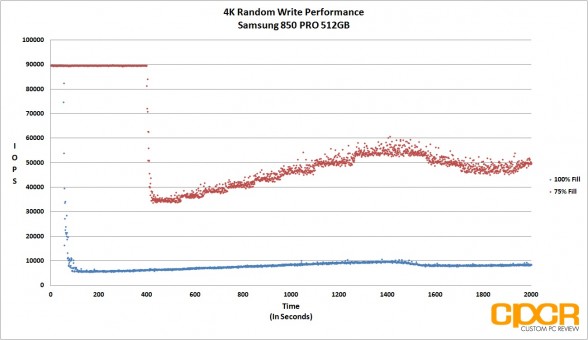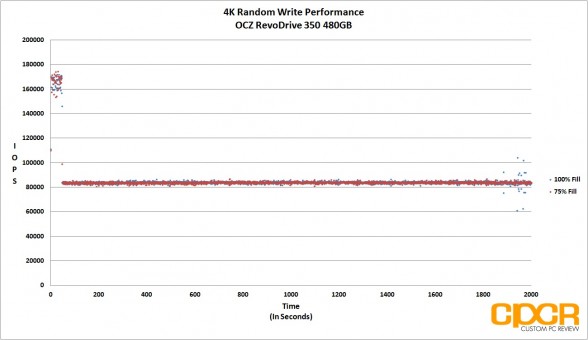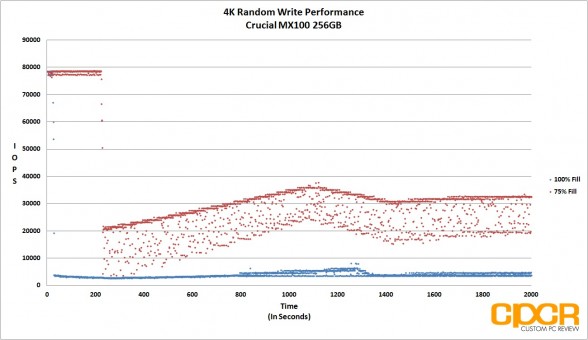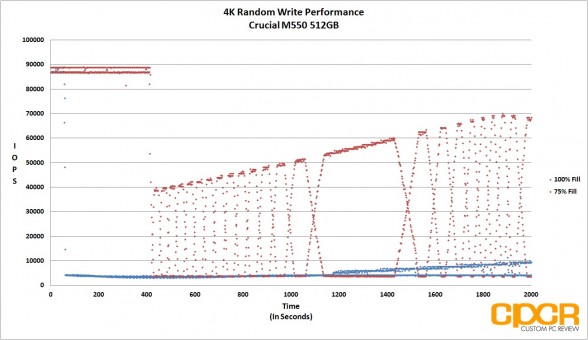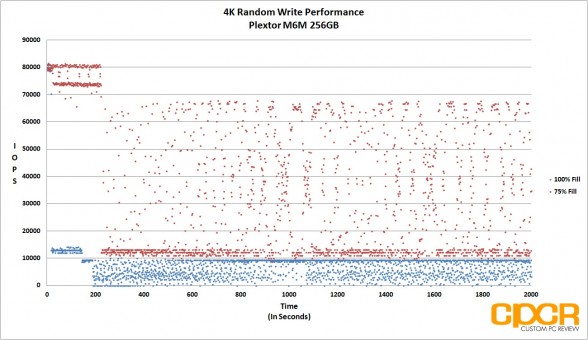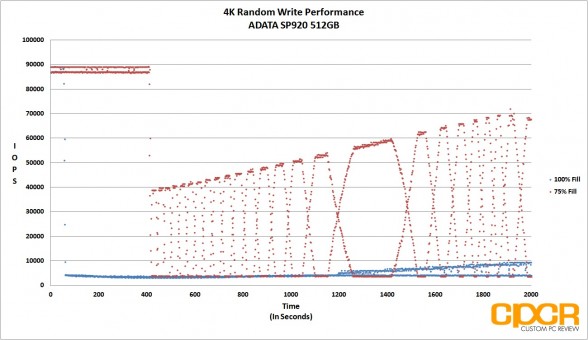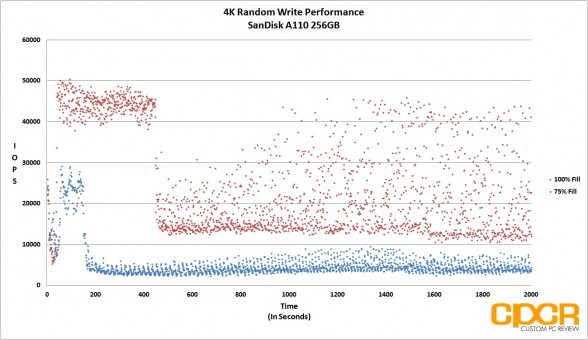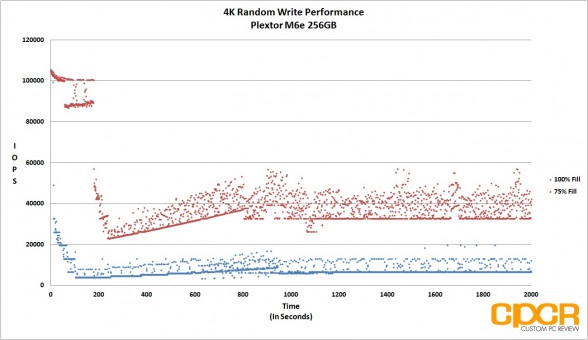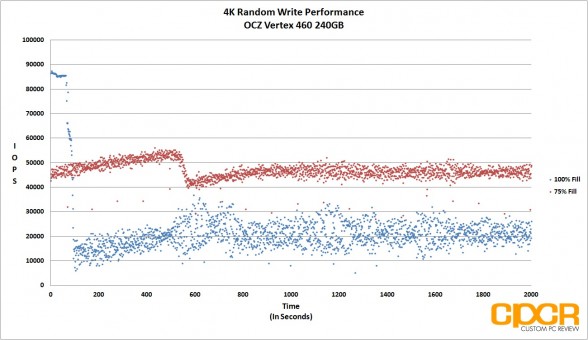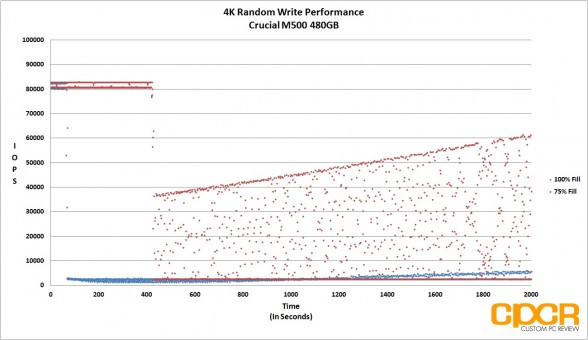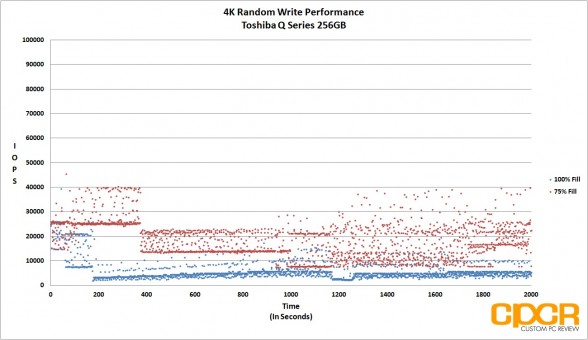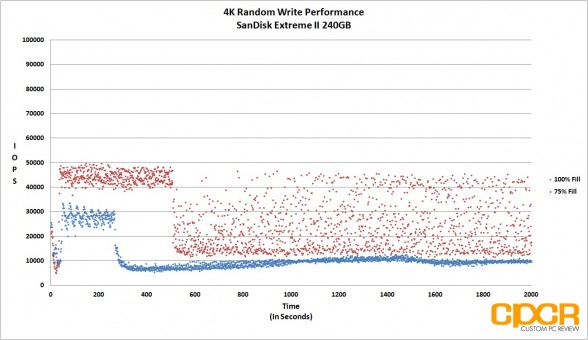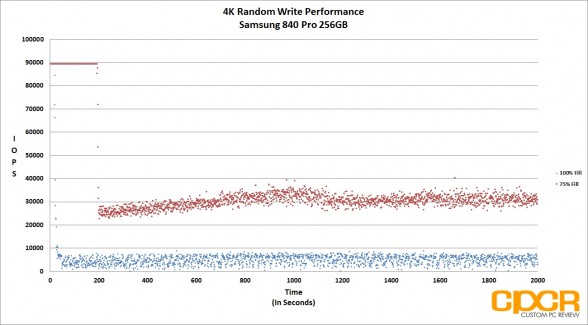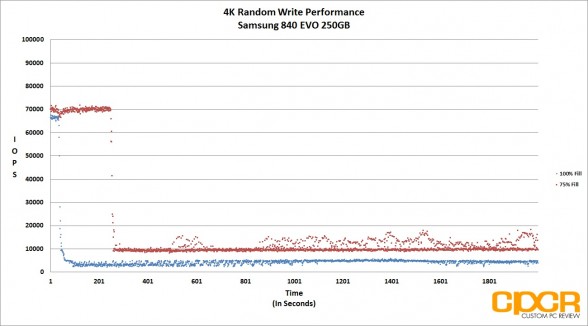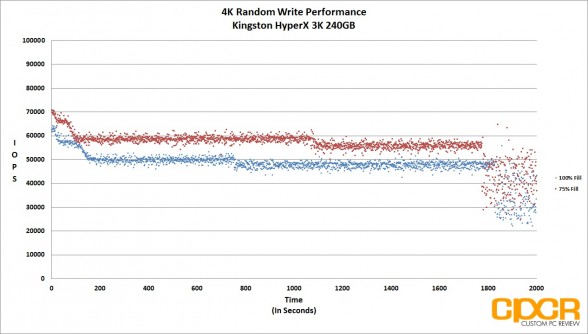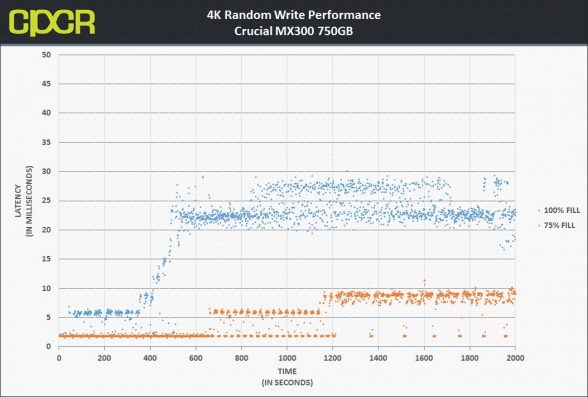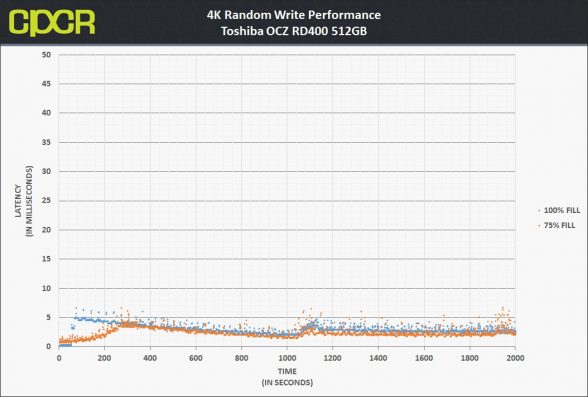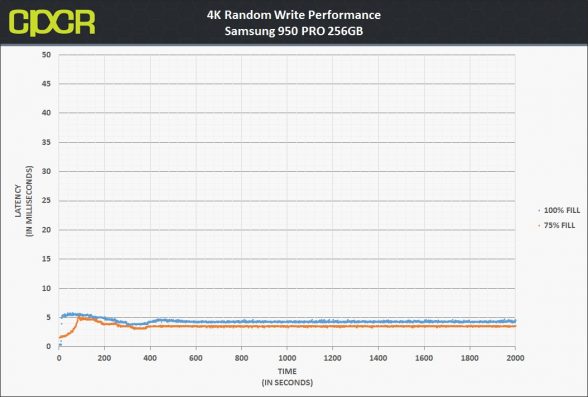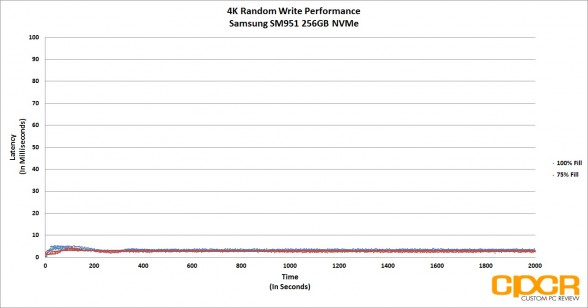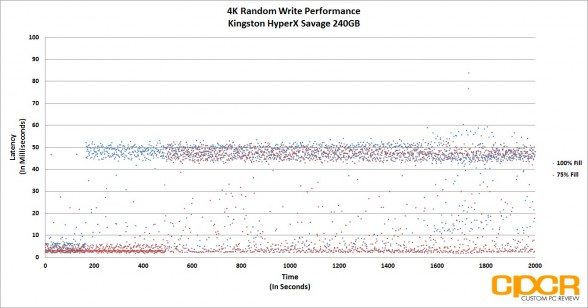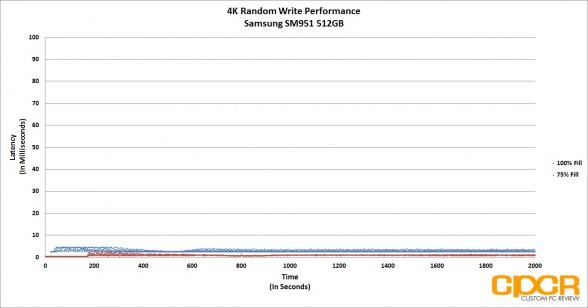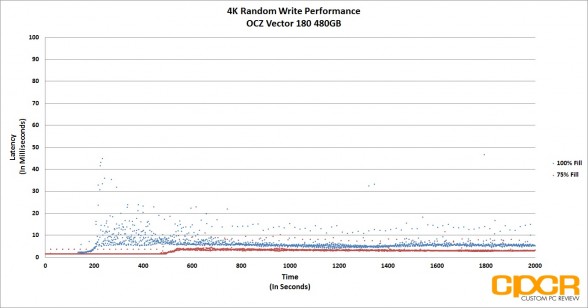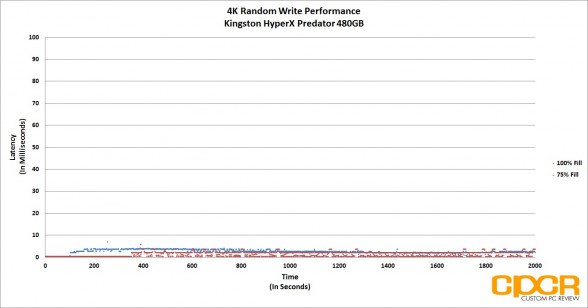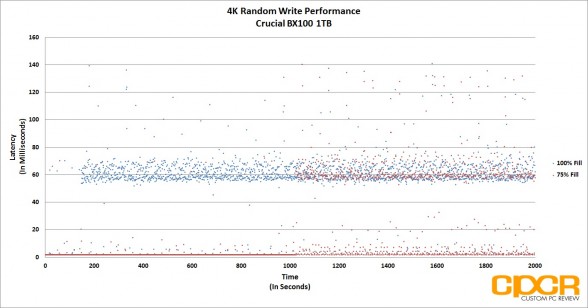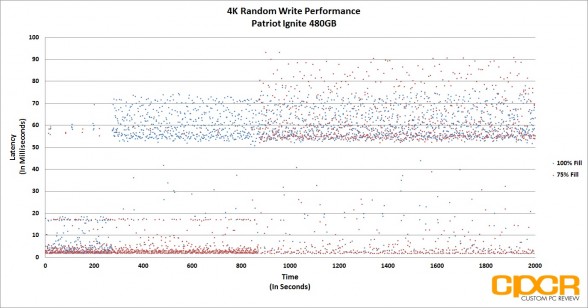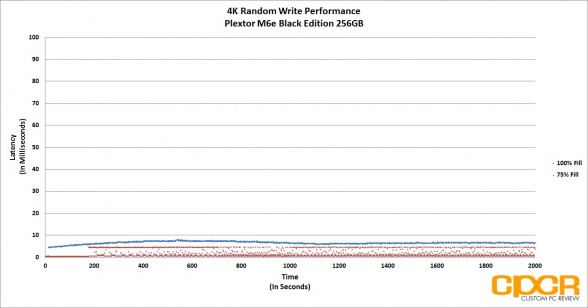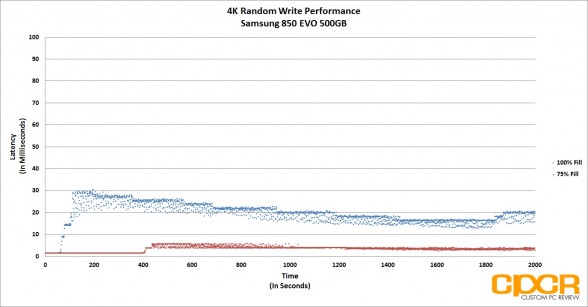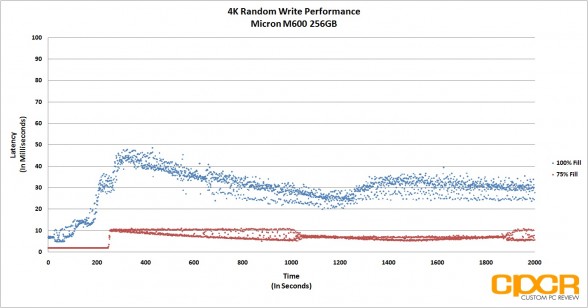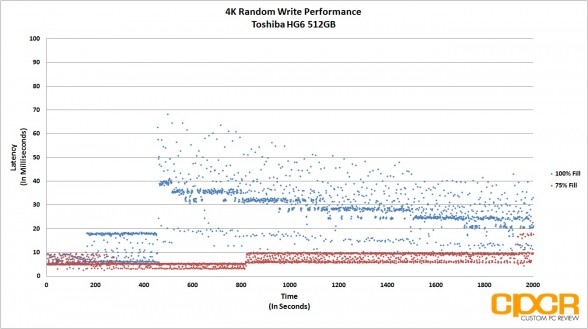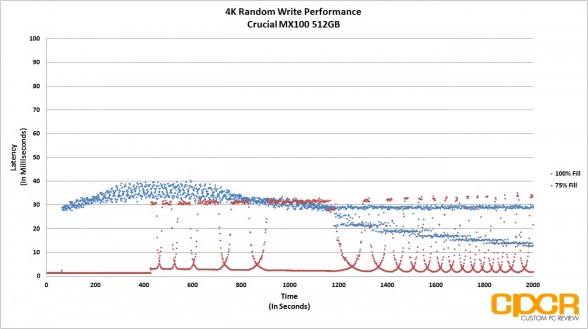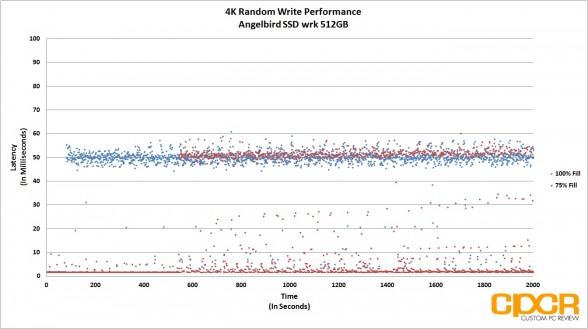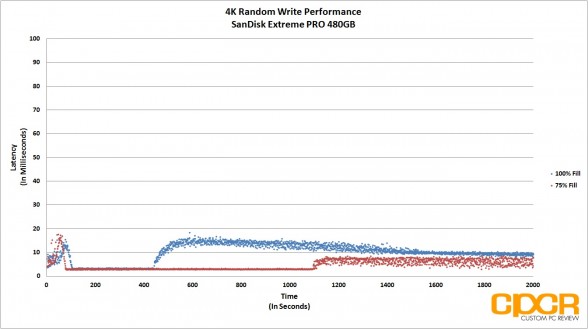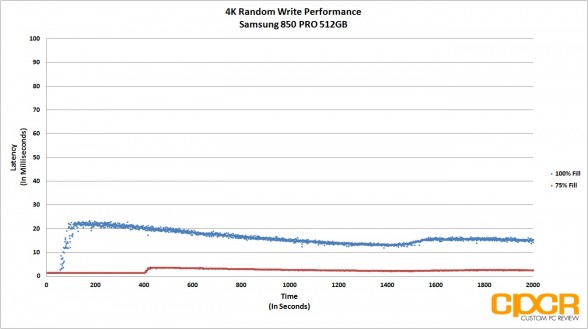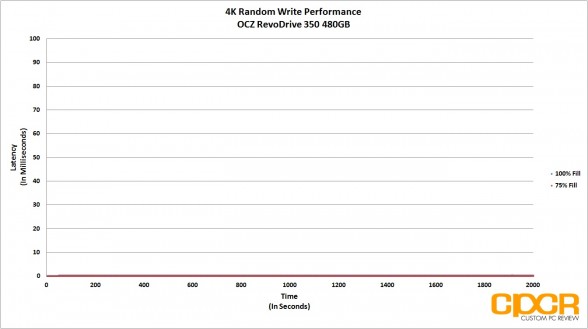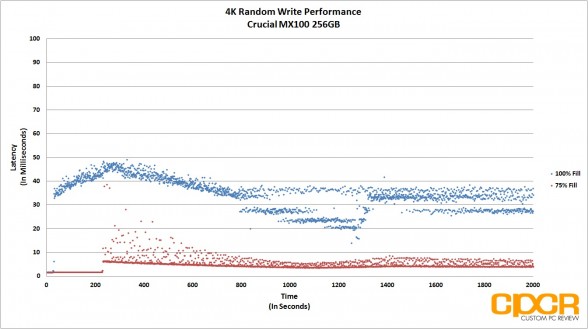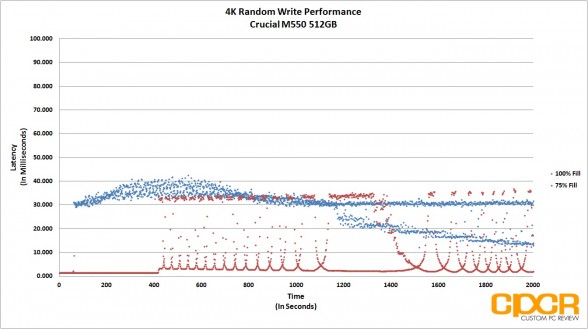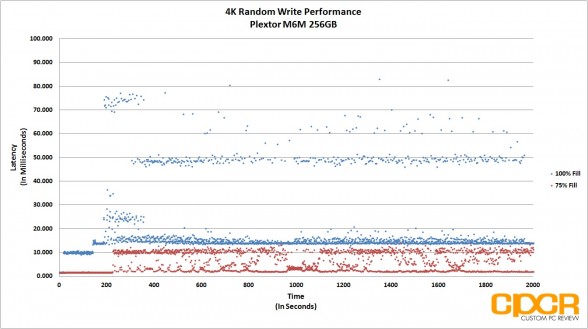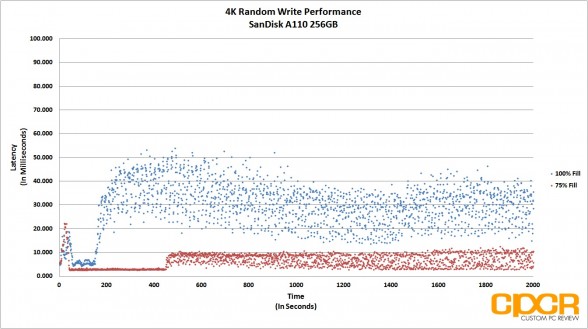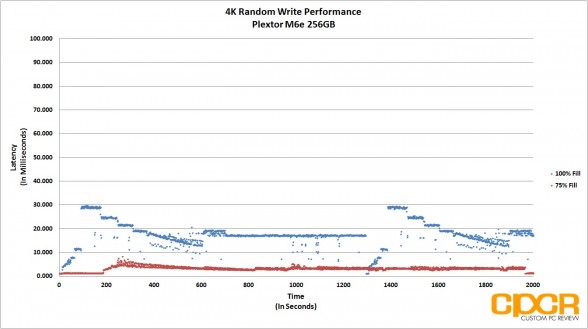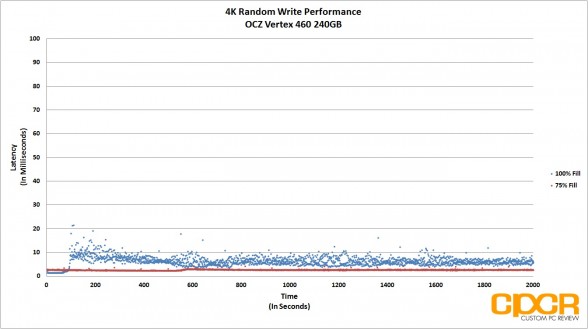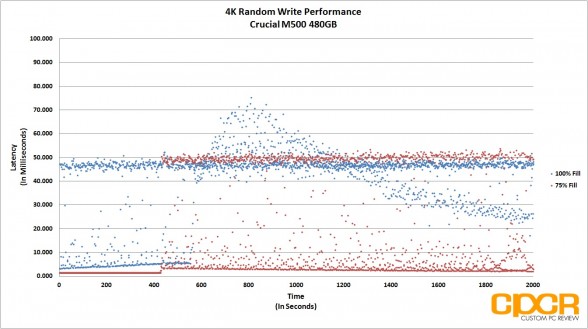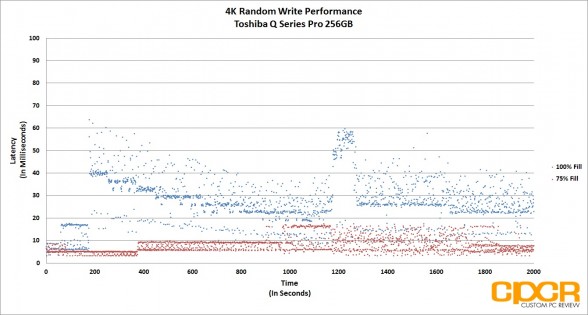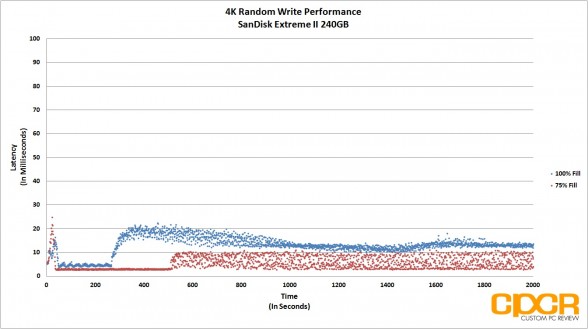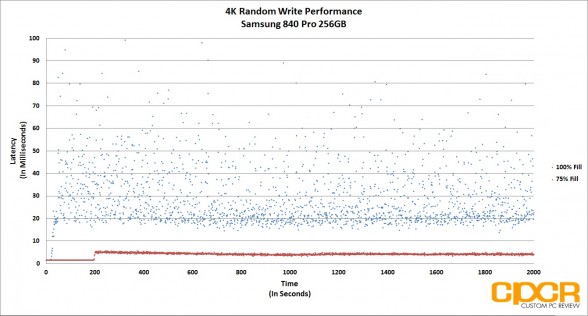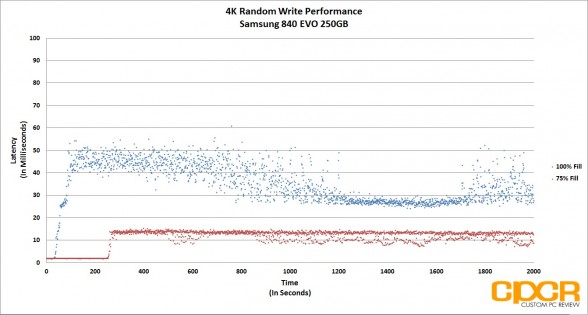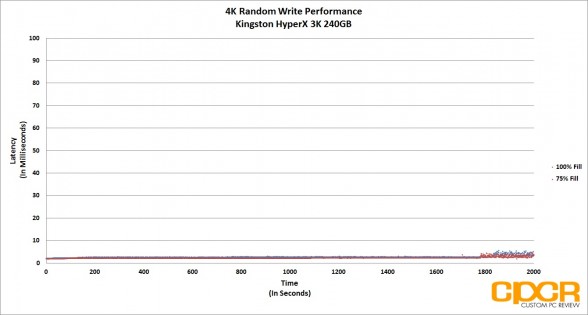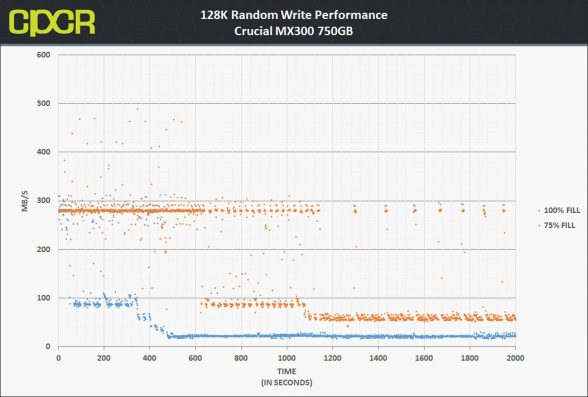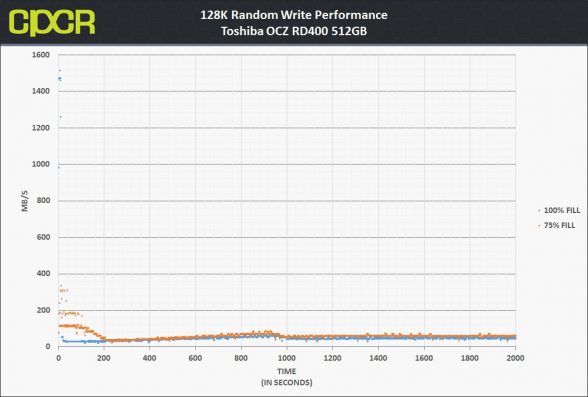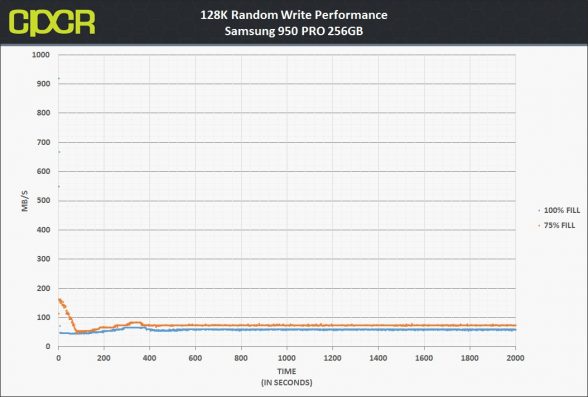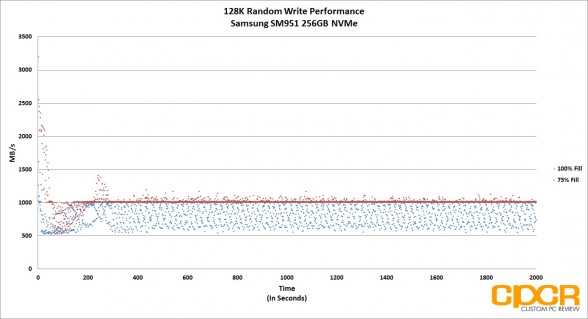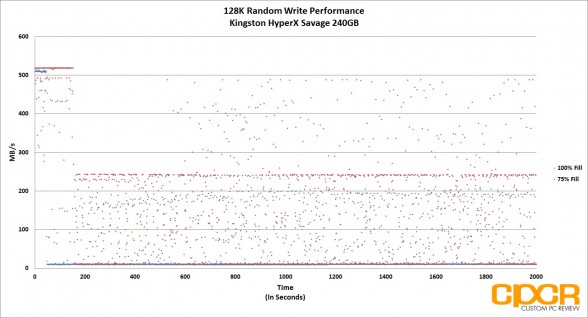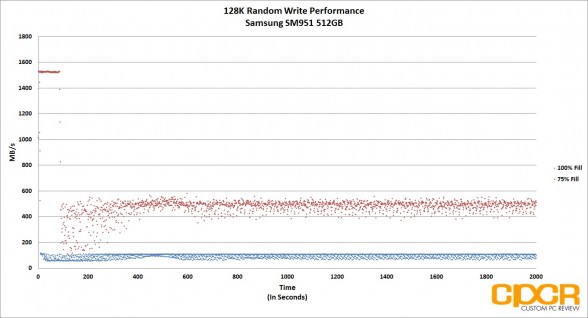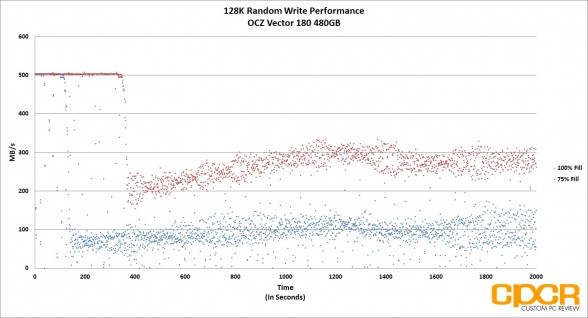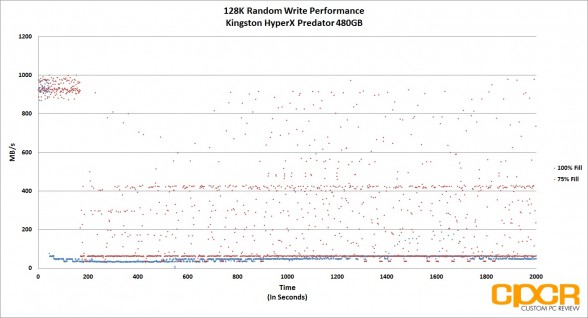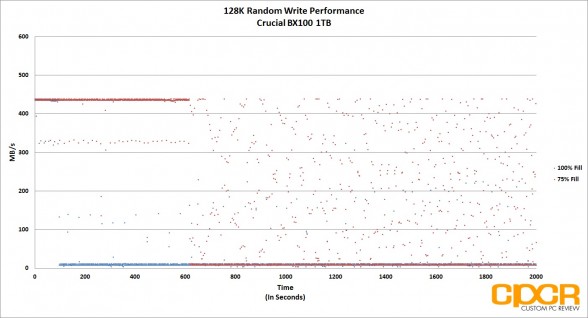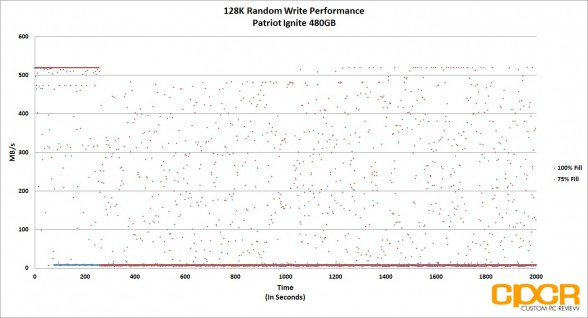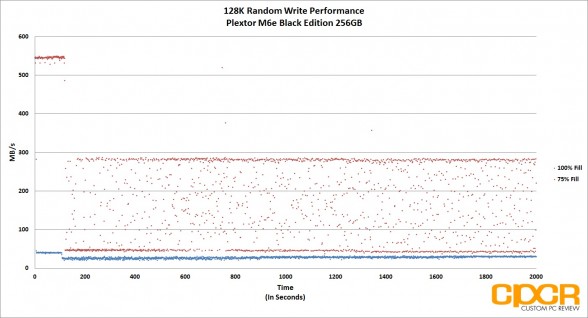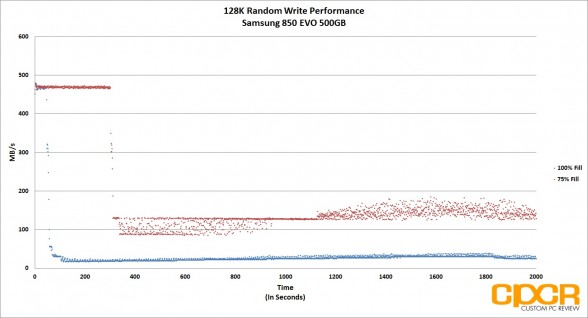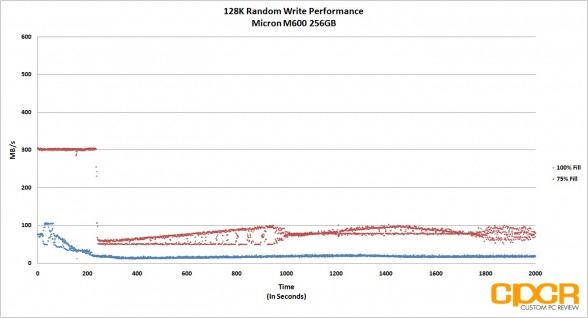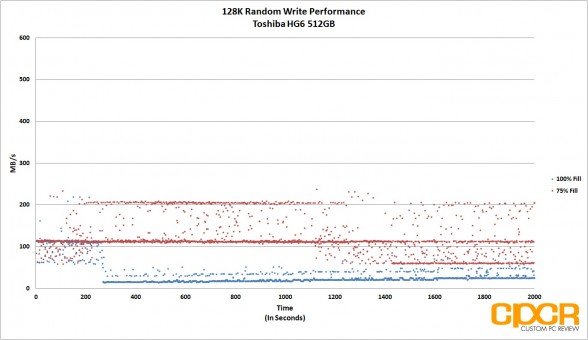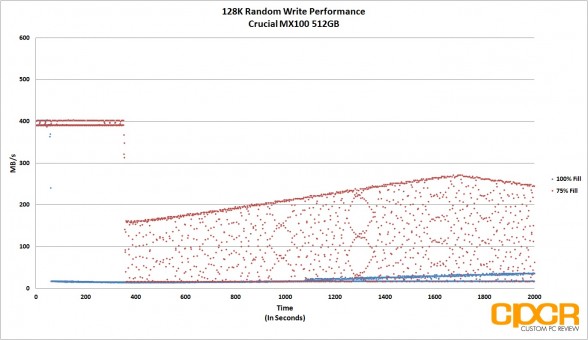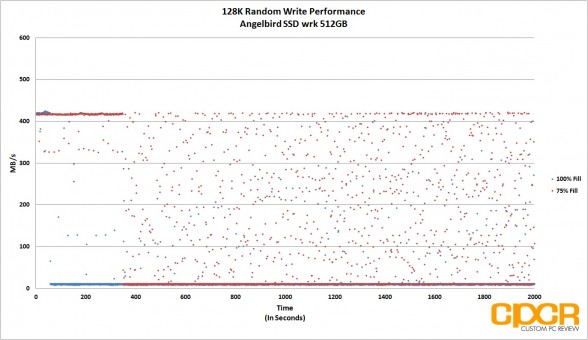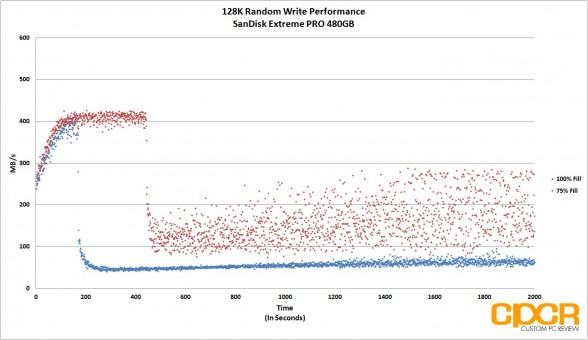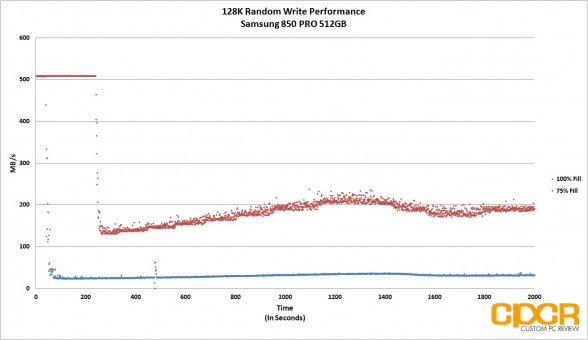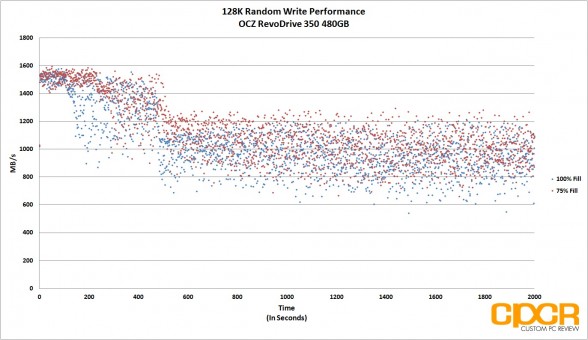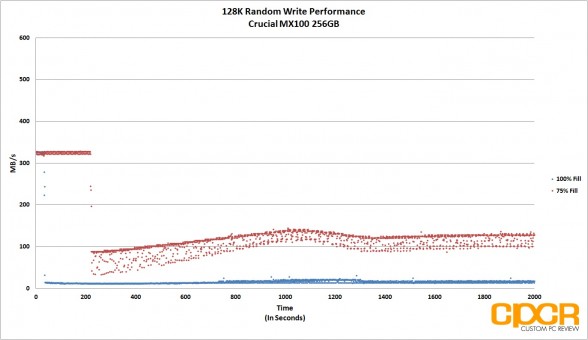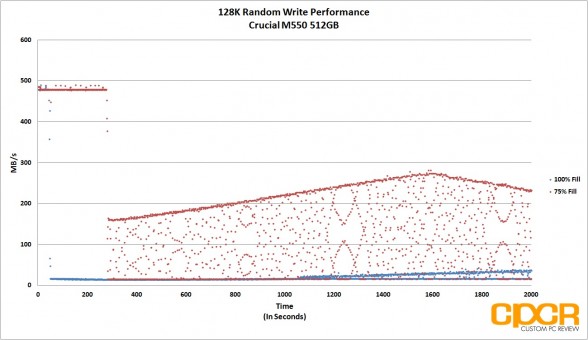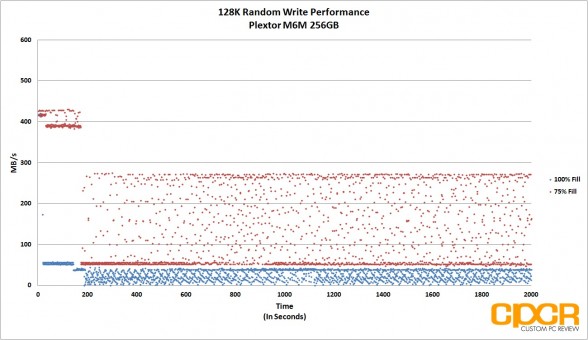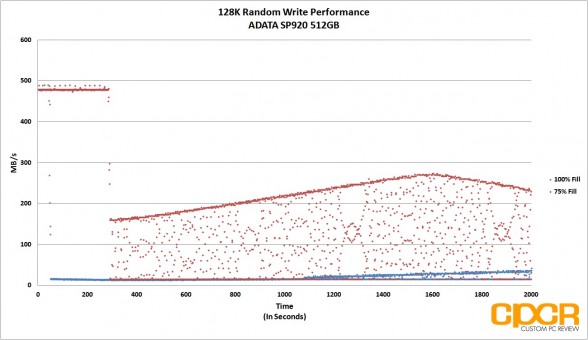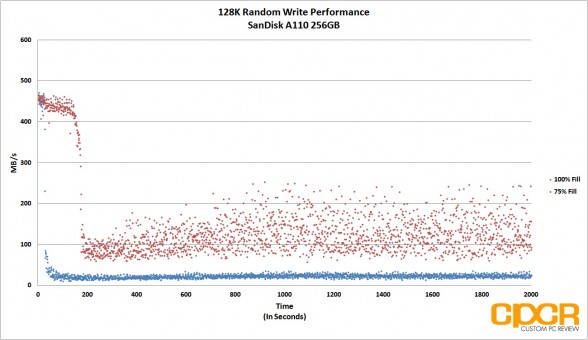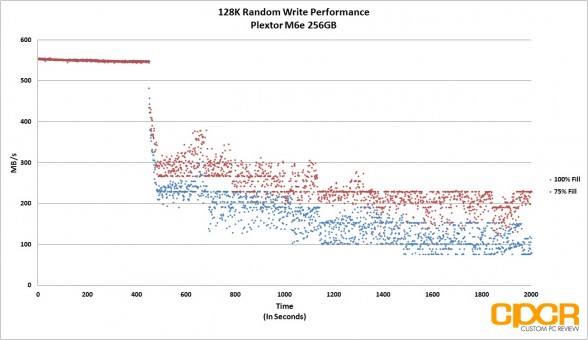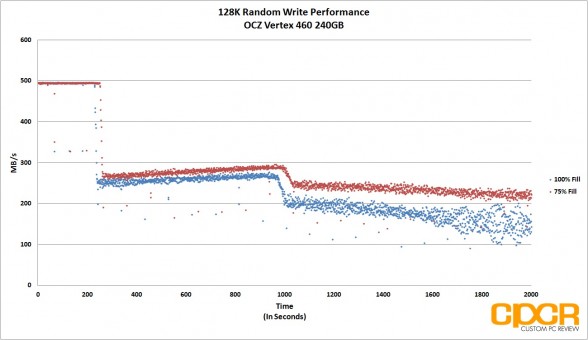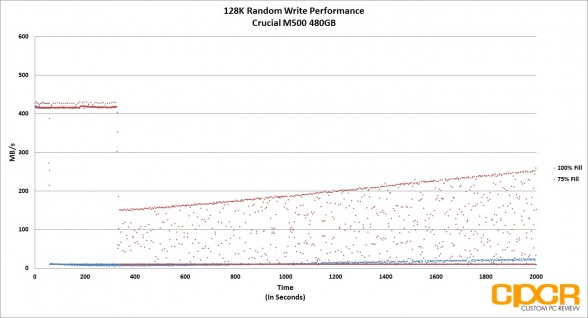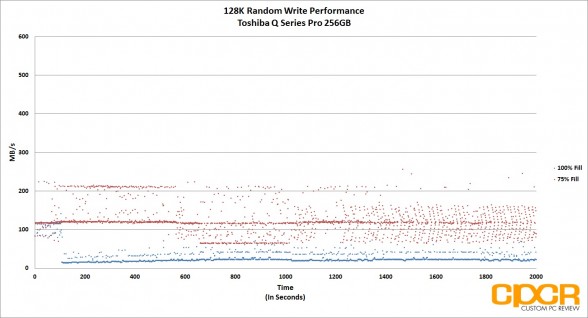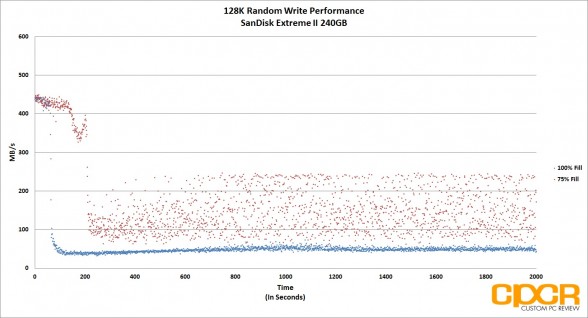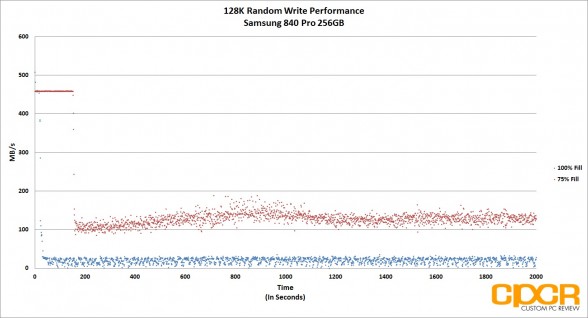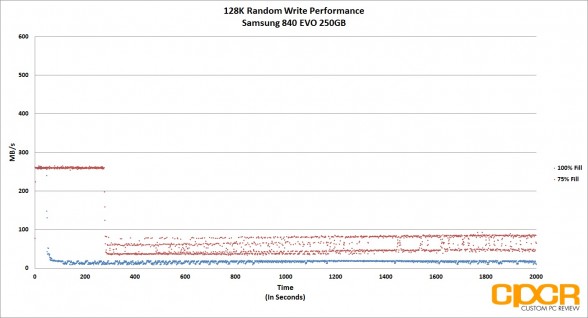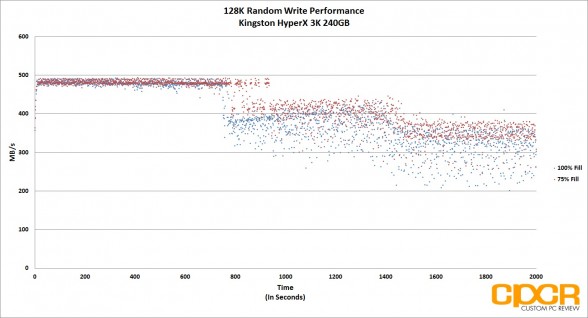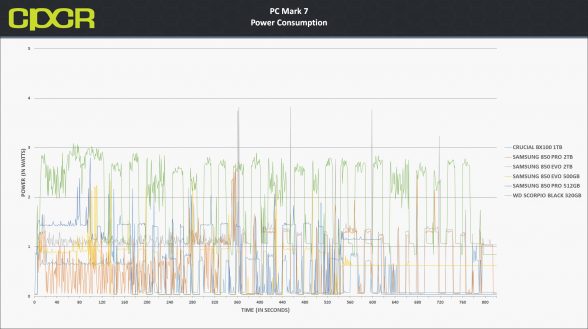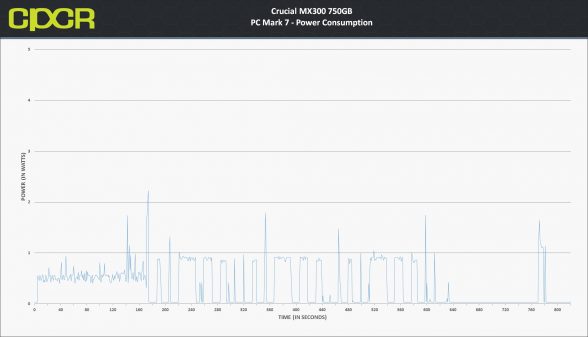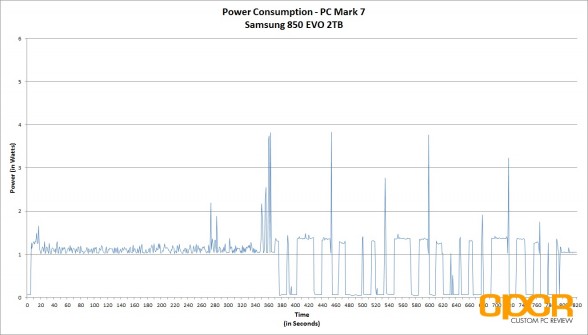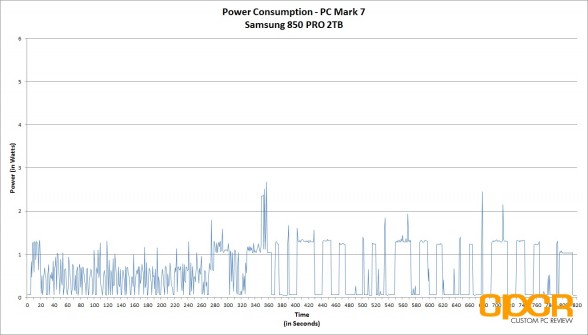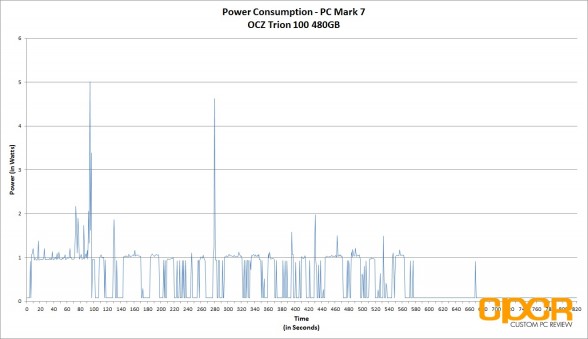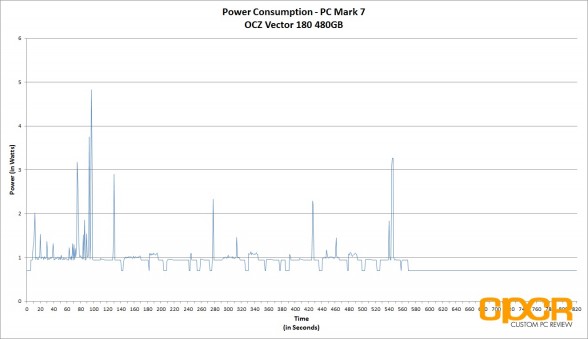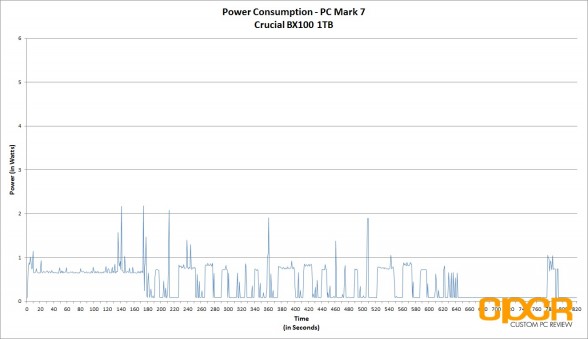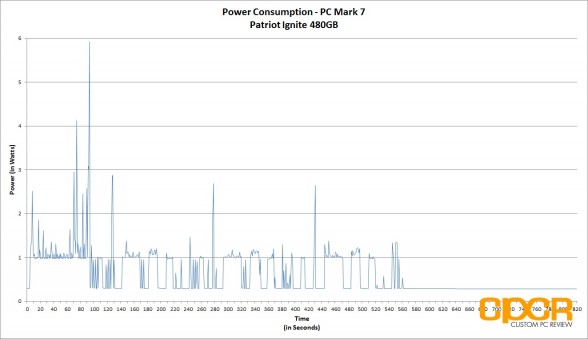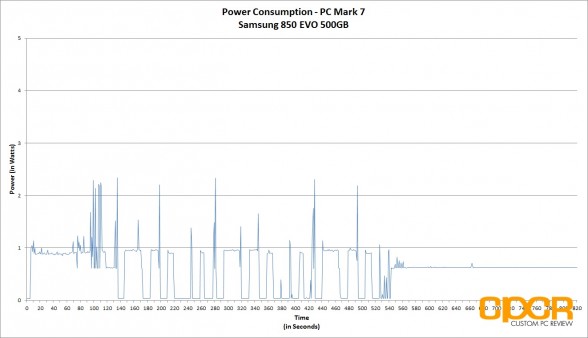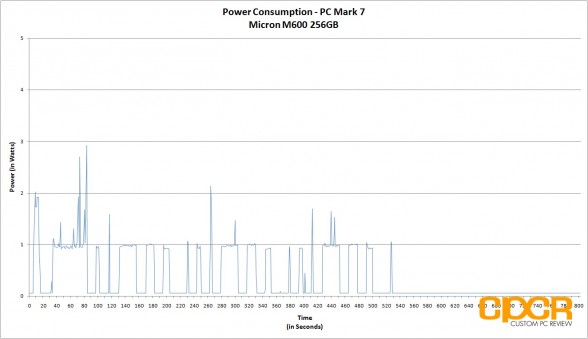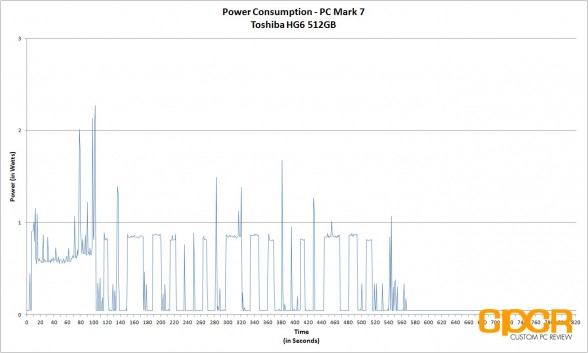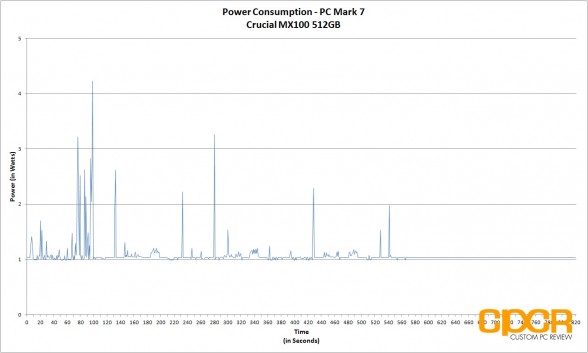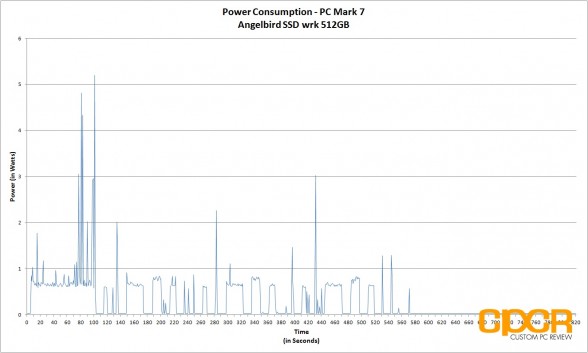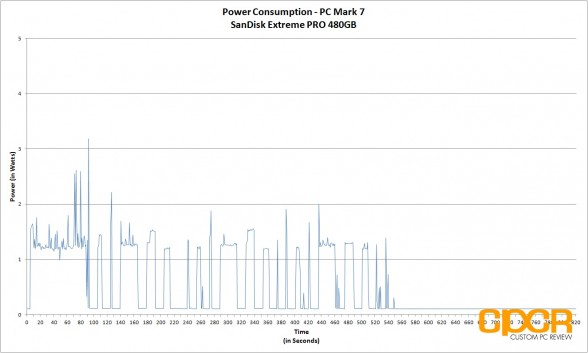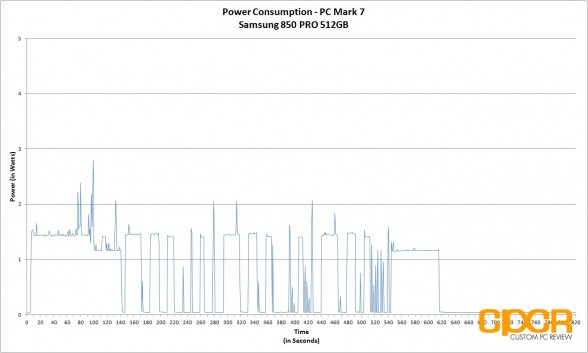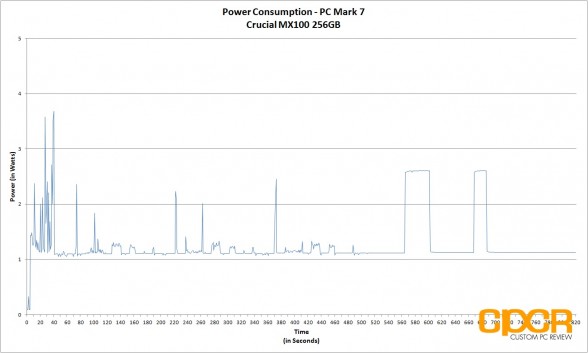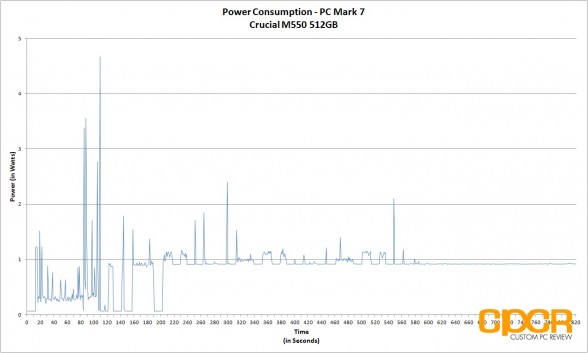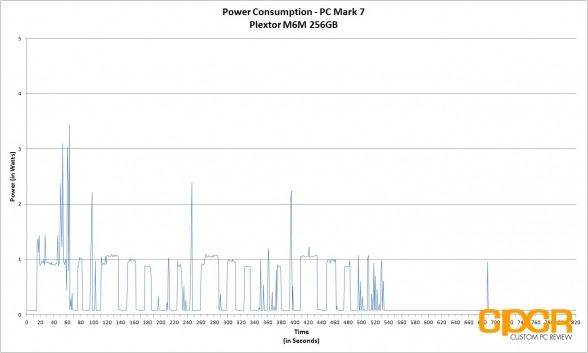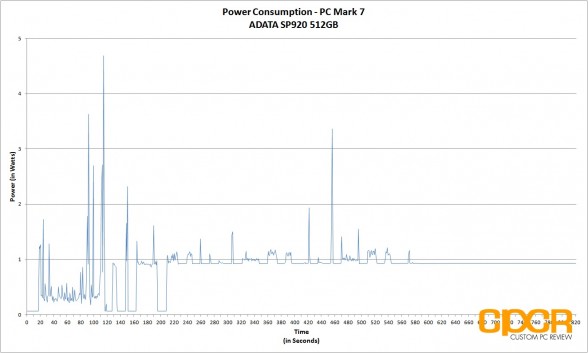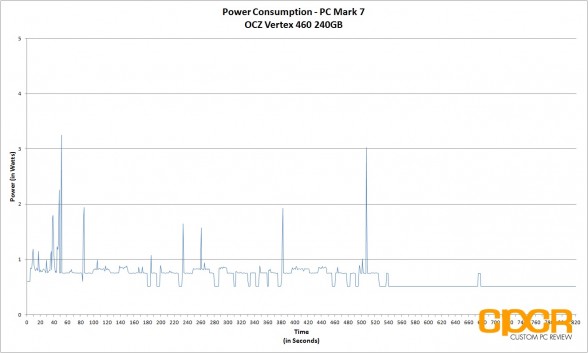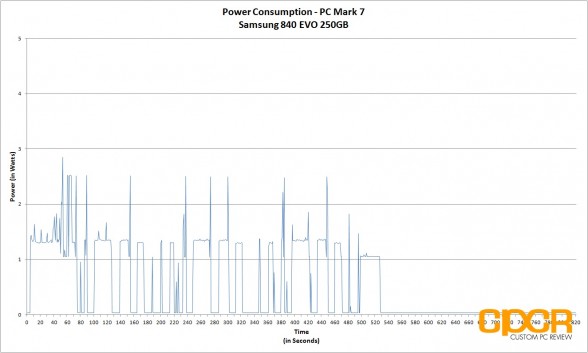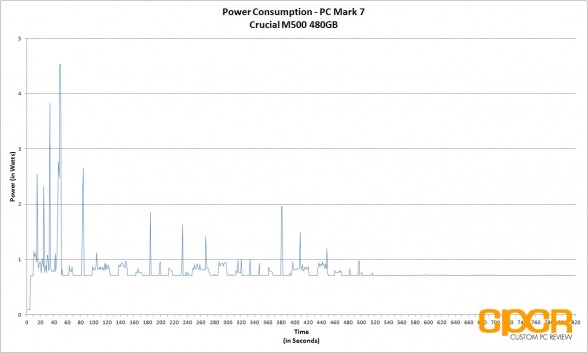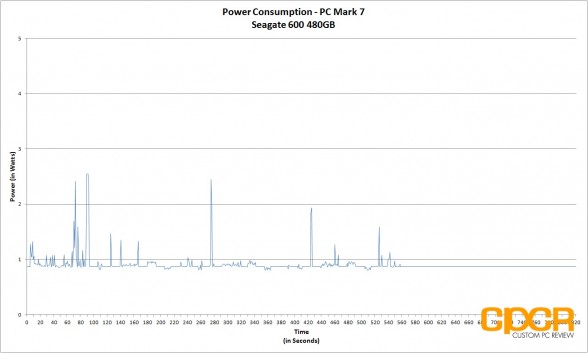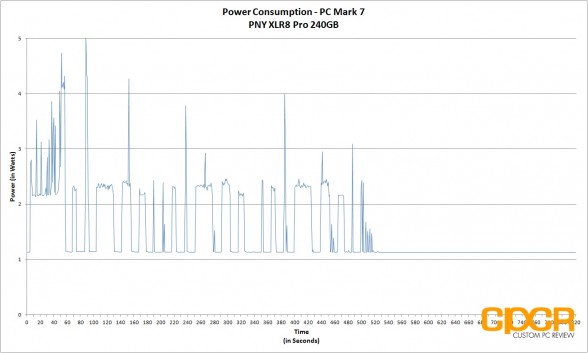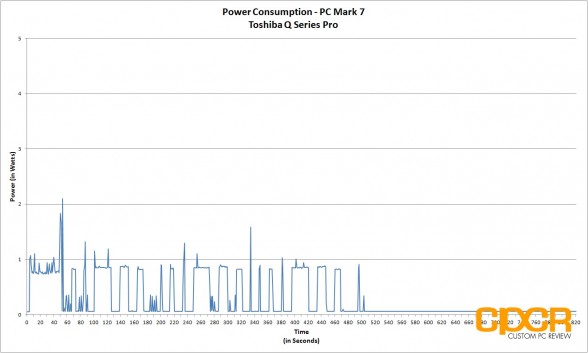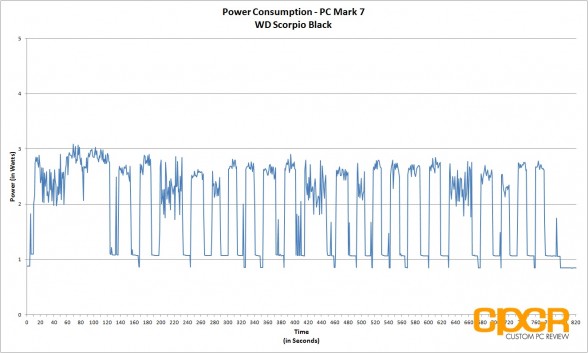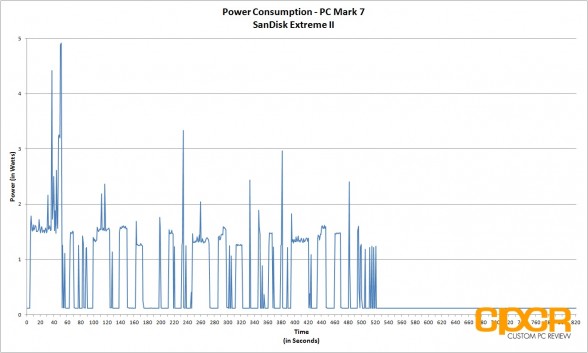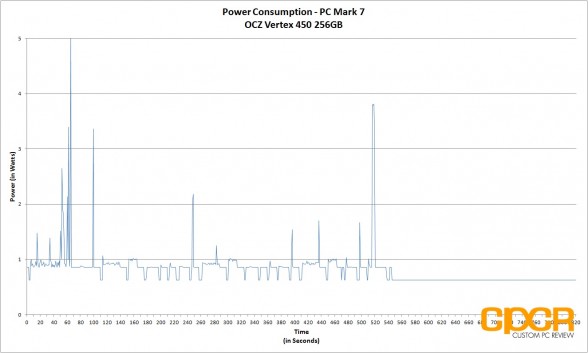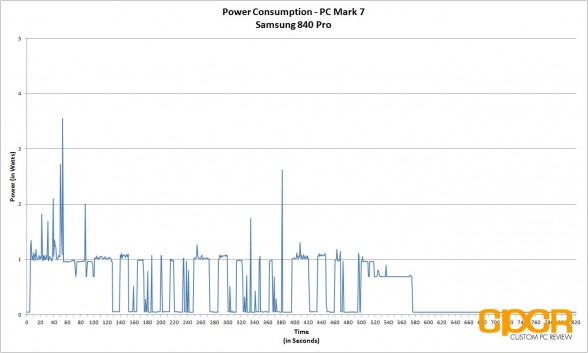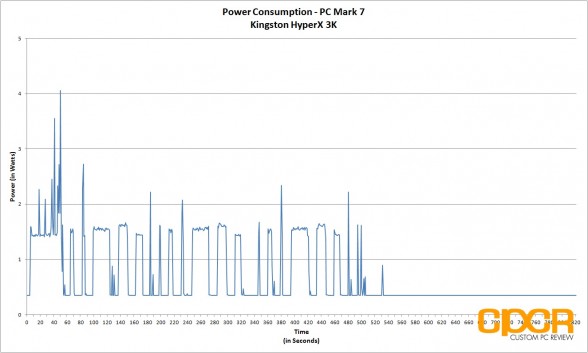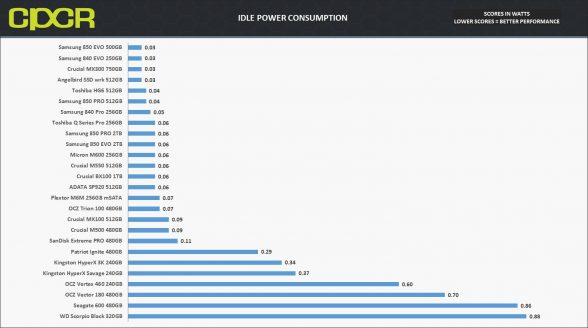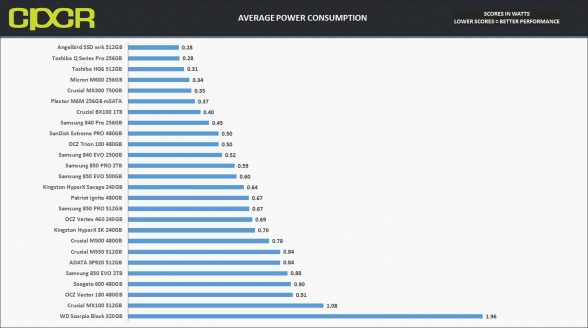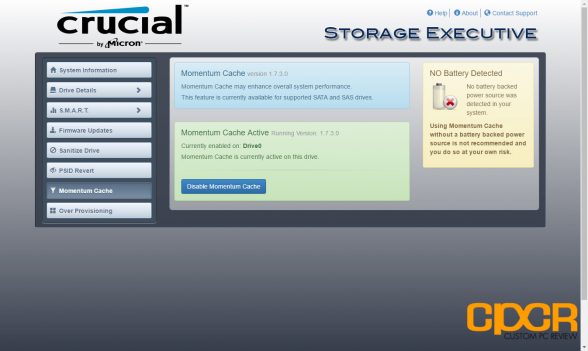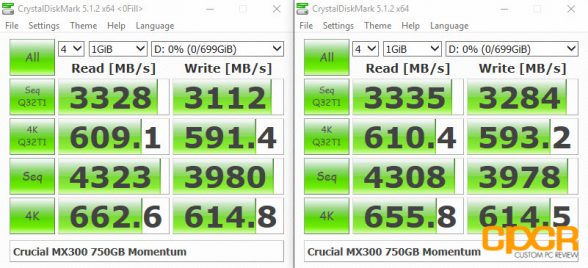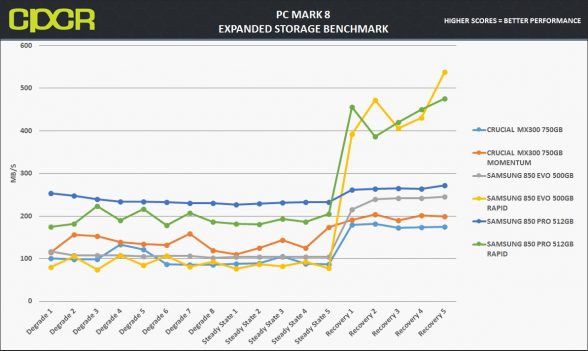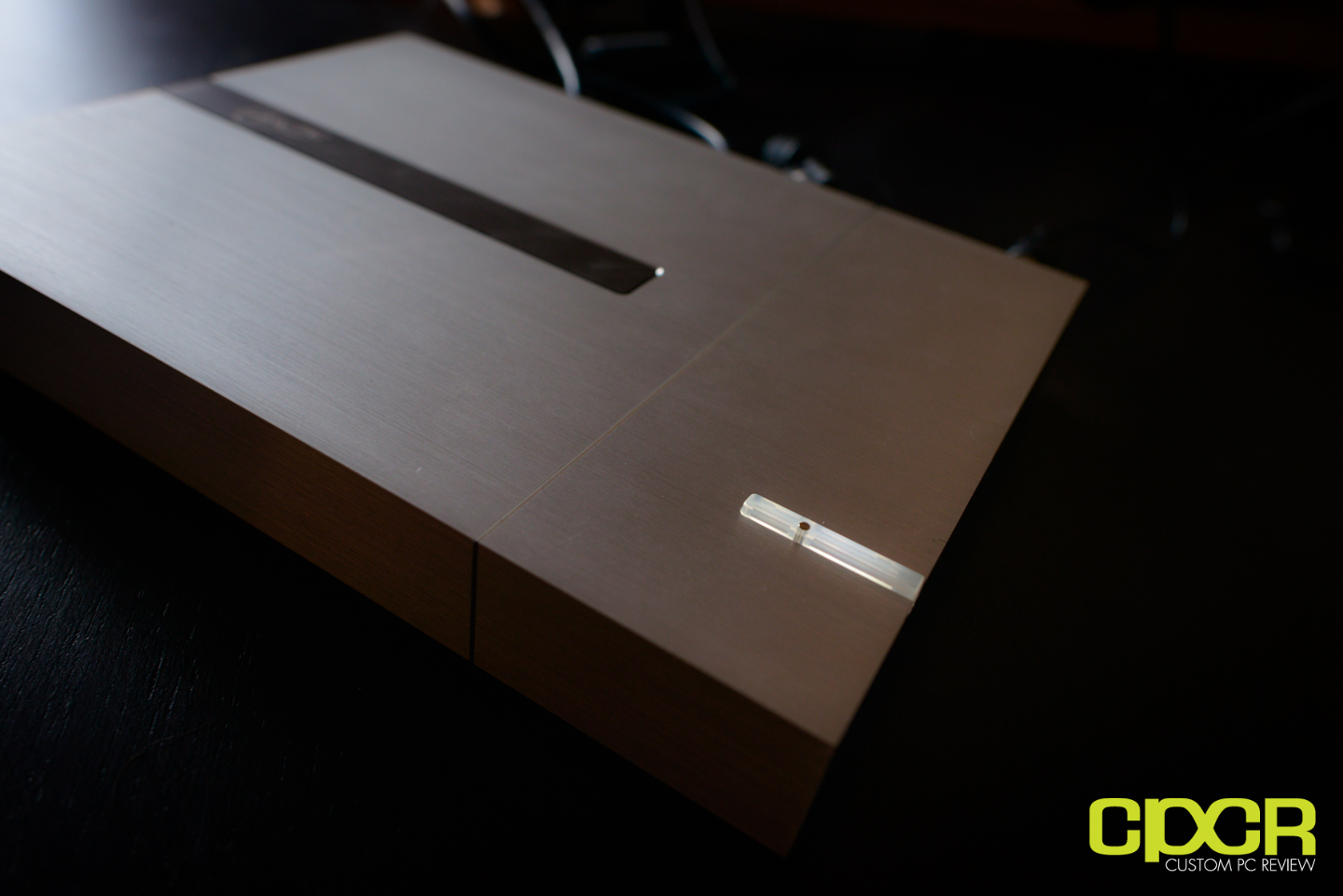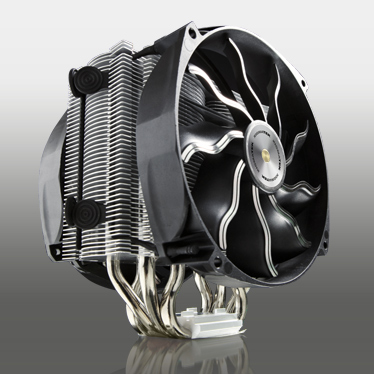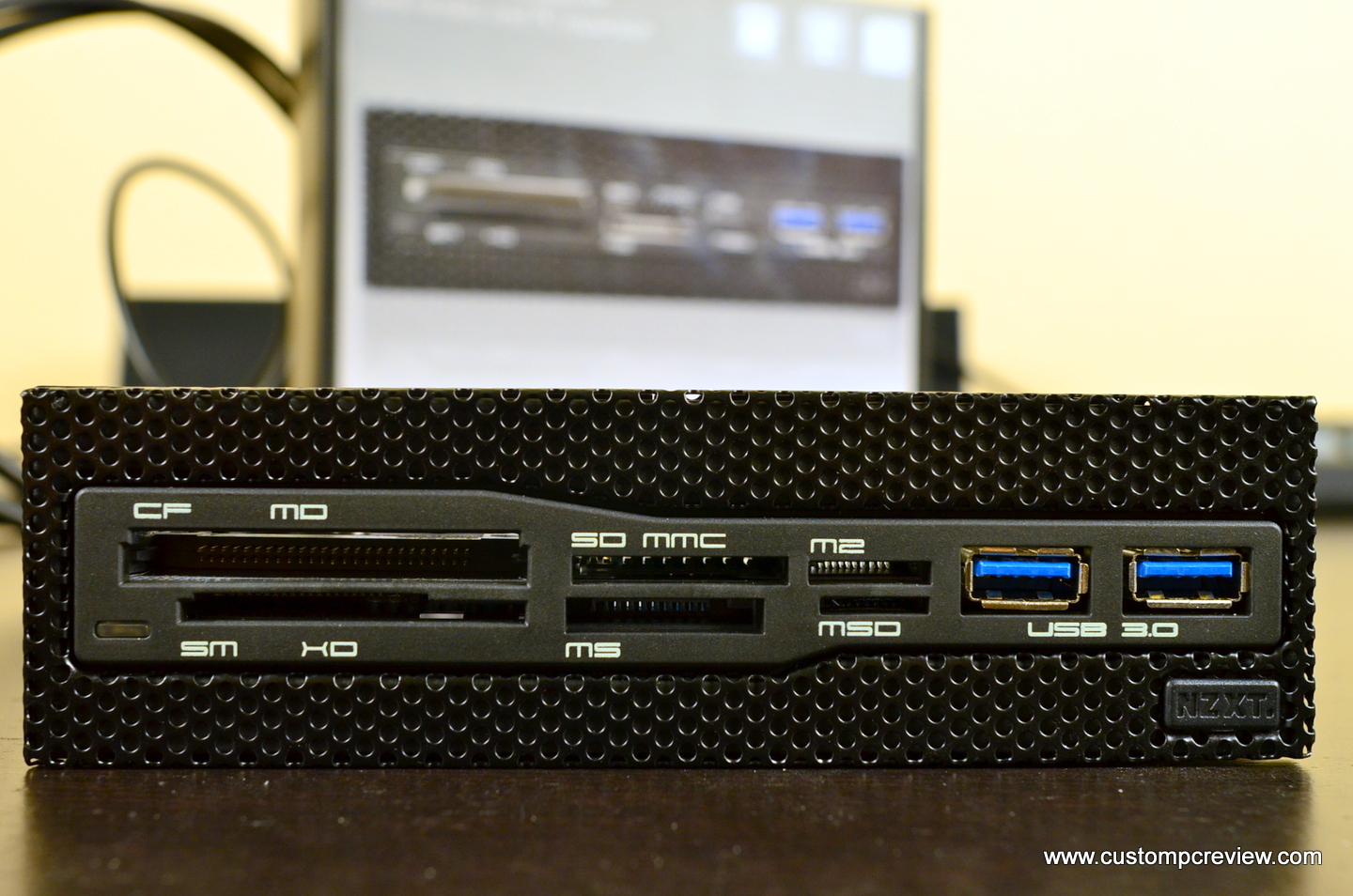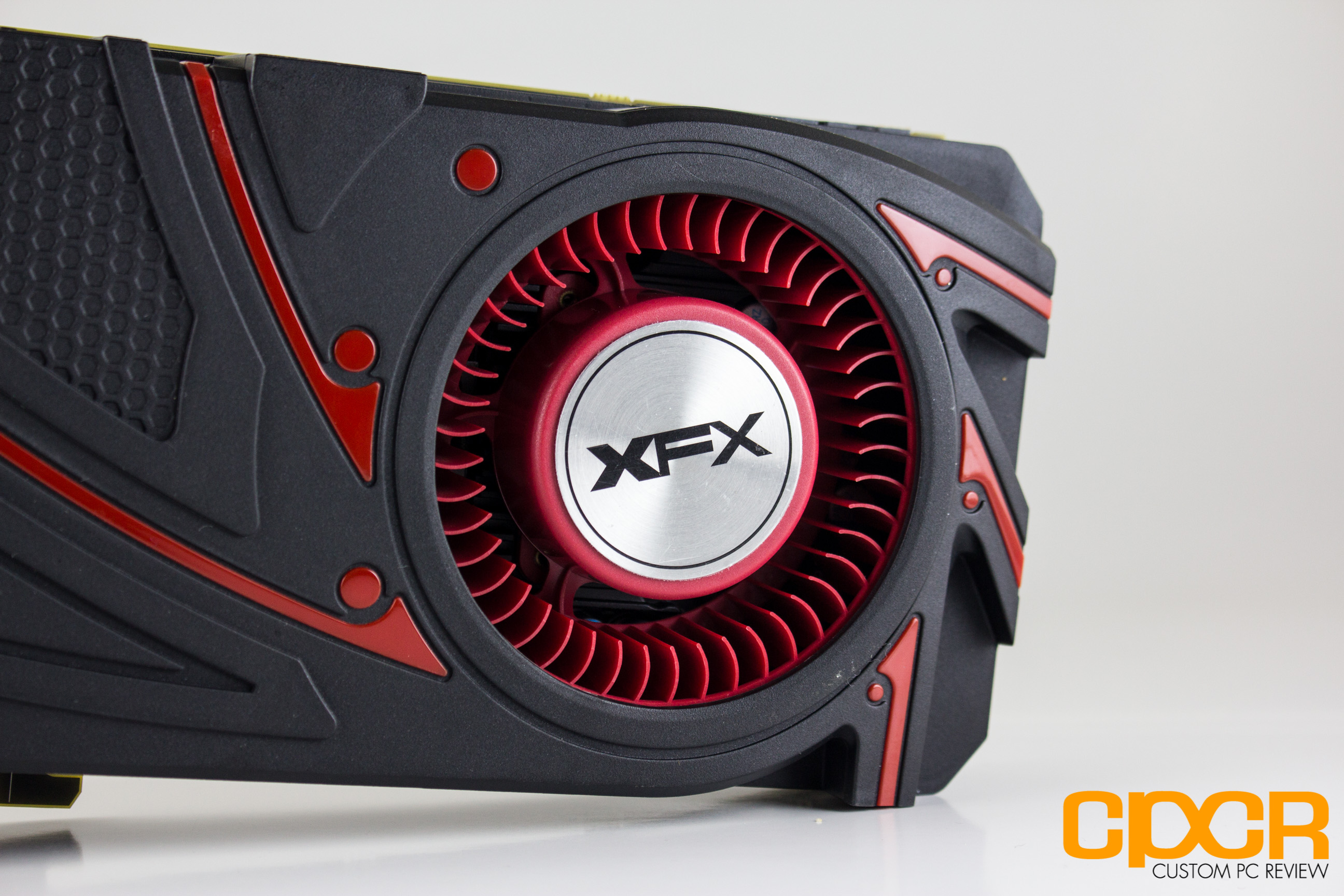[section label=”Introduction”]
Crucial’s First 3D TLC SSD
For over two years, Samsung has been the only mass manufacturer of 3D NAND and being the first to market SSDs with the new technology, they’ve reaped some serious rewards. In a recent report by analyst firm TrendFocus, Samsung owns a staggering 40.8% share of total SSDs shipped and their 3D NAND accounts for nearly all of the 17% of all NAND shipped today.
As such, we know that people want 3D NAND and if you’re a NAND maker without a 3D NAND product, it’s about time to step up your game. Micron, being one of the world’s largest NAND producers is stepping up in a big way with their latest Crucial branded SSD, the Crucial MX300. Following the same strategy Crucial has taken since they first launched SSDs to the consumer market, Crucial’s new MX300 SSD will be aimed squarely at the mainstream SSD market.
Micron 3D NAND
The newest development with the Crucial MX300 SSD is that it employs the use of Micron’s new 3D TLC NAND. Like previous 2D planar NAND, Micron 3D TLC NAND is a joint development between Intel and Micron and has been several years in the making. Micron first announced their upcoming 3D NAND back in late 2014 and it’s quite literally taken almost 2 years to develop into an actual consumer product. That said, they’re still the second company to release a product based on 3D NAND product, so I guess they’re doing pretty well compared to the rest of the market.
Micron’s 3D NAND is quite different compared to what everyone else is doing in the industry. The biggest difference is its core technology. Rather than use new CTF, or Charge Trap Flash, technology, Micron continues to utilize their tried and true floating gate design. Unfortunately, floating gate technology is more susceptible wearing out than CTF so Micron’s 3D NAND won’t be significantly more durable than 2D planar NAND, but it also shouldn’t be any less durable than 2D planar NAND as well.
Micron’s first 3D NAND product will feature a 32-layer stack which provides up to 256Gb per die when used in a MLC (Multi-Level Cell) configuration and 384Gb per die in a TLC (Triple-Level Cell) configuration.
In order to achieve such densities with such a relatively low stack, Micron placed the logic under the memory array as shown in the diagram above. By doing so, they’re able to significantly reduce the amount of logic needed. Without the additional logic on die, it also allows Micron to utilize a 4-plane architecture which provides twice the addressable bytes as 2-plane architecture used on 2D planar NAND. This allows for better parallelism with fewer dies which is important from a performance standpoint as dies become denser.
Crucial MX300 750GB Specifications
| Manufacturer | Crucial | ||||
|---|---|---|---|---|---|
| Model | MX300 | ||||
| Controller | Marvell 88SS1074 | ||||
| NAND | Micron 384Gb 32-Layer TLC 3D NAND | ||||
| DRAM Cache | Micron LPDDR3 | ||||
| Model Number | CT275MX300SSD1 | CT525MX300SSD1 | CT750MX300SSD1 | CT1050MX300SSD1 | CT1050MX300SSD1 |
| Capacity | 275GB | 525GB | 750GB | 1TB (1050GB) | 2TB (2050GB) |
| Sequential Reads | 530MB/s | 530MB/s | 530MB/s | 530MB/s | 530MB/s |
| Sequential Writes | 500MB/s | 510MB/s | 510MB/s | 510MB/s | 510MB/s |
| 4K Random Read | 55,000 | 92,000 | 92,000 | 92,000 | 92,000 |
| 4K Random Write | 83,000 | 83,000 | 83,000 | 83,000 | 83,000 |
| Form Factor | 2.5″ (7mm) | ||||
| Interface | SATA 6Gb/s | ||||
| Warranty | 3 Year (80 TBW) Limited | 3 Year (160 TBW) Limited | 3 Year (220 TBW) Limited | 3 Year (360 TBW) Limited | 3 Year (400 TBW) Limited |
The Crucial MX300 will utilize Micron’s TLC 3D NAND paired with Marvell’s 88SS1074 controller. The drive was initially offered in only the 750GB capacity, but Crucial is now also offering the MX300 in 275GB, 525GB and 1TB capacities as well. Performance on the drive is rated at up to 530/510 MB/s sequential reads/writes and 92K/83K IOPS 4K random reads and writes depending on capacity. The Crucial MX300 is also further boosted by Dynamic Write Acceleration technology which allows Crucial to boost drive performance by converting a portion of NAND from TLC to SLC. We’ve covered this technology in a bit more depth in our review of the Micron M600.
Warranty on the Crucial MX300 is 3 years with a variable TBW (TeraBytes Written) rating depending on the drive. The Crucial MX300 750GB will get a TBW rating of 220TBW while other capacities will get TBW ratings from 80 TBW in the 275GB capacity all the way up to 400TBW for the 2TB capacity.
[section label=”A Closer Look”]
A Closer Look at the Crucial MX300 750GB
Here’s a look at the packaging for the Crucial MX300 750GB.
Included in the packaging is a couple pieces of documentation and the drive itself.
Here’s a closer look at the Crucial MX300 750GB. It’s a 2.5″, 7mm drive and the design is very similar to what we’ve seen from previous Crucial SSDs.
Opening up the Crucial MX300 is fairly easy. The drive’s casing is secured by tabs that simply pop out. Looking at the PCB, it’s fairly empty. There’s just 8 NAND packages onboard, a controller, DRAM, and a capacitor array.
The controller onboard the Crucial MX300 750GB is the Marvell 88SS1074-BSW2. It’s a 4 channel SATA 6Gb/s controller with LDPC ECC technology.
The Crucial MX300 is the first drive to feature Micron’s new 32-layer 3D TLC NAND. Micron’s TLC 3D NAND is extra dense at 384Gb per die so there’s just two dies per package. This gives each package 96GB of storage capacity and a grand total of 768GiB in total in the MX300.
Onboard, Crucial is also using 1GB of Micron LPDDR3 1333MHz for the DRAM buffer.
Crucial also includes a capacitor array with the MX300 which provides partial power loss protection for the drive. These capacitors will only protect data at rest.
[section label=”Testing Setup, Drive Info, Software”]
Testing Setup
| System | CyberPowerPC Gamer Xtreme 4200 |
|---|---|
| CPU | Intel Core i7 4770K |
| Motherboard | ASUS Z87-A |
| Memory | Kingston HyperX Genesis 16GB DDR3 2133MHz |
| Graphics | Intel HD4600 Graphics |
| Storage | OCZ Vertex 4 256GB |
| Power Supply | Corsair HX650 |
| Case | HSPC High Speed Tech Station |
| Optical Drive | ASUS OEM DVD Drive |
| Expansion Cards | Bplus M2P4S M.2 PCIe x4 Adapter |
| Operating System | Windows 10 Pro 64-bit & CentOS 6.4 |
Special thanks to CyberPowerPC, Kingston, OCZ Technology and HSPC for sponsoring our test bench!
Crystal Disk Info
Crucial MX300 750GB
Today we’ll be reviewing the Crucial MX300 750GB with the M0CR011 firmware. Features available on the drive includes S.M.A.R.T., Advanced Power Management, Native Command Queuing, TRIM, and DevSleep. For data protection, the Crucial MX300 also features RAIN (Redundant Array of Independent NAND), adaptive thermal protection, data-path protection, power-loss protection, and data defense. Like many of Crucial’s previous drives, the Crucial MX300 also supports AES-256 and TCG Opal 2.0/IEEE-1667 hardware encryption capabilities.
Crucial Storage Executive
Crucial MX300 750GB
Crucial’s software for their SSDs is Crucial Software Executive which allows users to easily monitor the SSD, secure erase the drive, upgrade the firmware, and reset the encryption. New for Storage Executive however is the inclusion of Momentum cache which is a caching feature that leverages unused system resources to improve storage performance. This is a similar to solutions we’ve seen previously from Samsung and Plextor. More on that later.
[section label=”ATTO Disk Benchmark”]
Crucial MX300 750GB Performance
ATTO Disk Benchmark v2.46
ATTO Disk Benchmark is one of the industry’s oldest and most popular benchmarks for testing disk read/write speeds. This benchmarks allows read and write testing using predefined block sizes and gives us a good idea of read/write speeds with different sized files. Most SSD manufacturers prefer using this benchmark when advertising SSDs as it tests using compressible data, which tends to yield best performance.
Performance Analysis
The Crucial MX300 750GB performed very well in ATTO Disk Benchmark, pushing 532MB/s sequential reads and 512MB/s sequential writes.
[section label=”AS SSD Benchmark”]
AS SSD Benchmark
AS SSD is a very commonly used benchmark used to measure SSD performance in sequential, 4K, 4K QD64 and latency. Tests are run using 100% incompressible data. AS SSD also outputs a final score at the conclusion of the test based off the overall performance of the drive.
Additionally, we also run AS SSD’s included compression benchmark which tests the drive using data of varying compressibility. Some SSDs such as SandForce based SSDs tend to perform significantly better when the data is compressible.
Performance Analysis
AS SSD performance isn’t as good as what we saw in ATTO Disk Benchmark, but the Crucial MX300 750GB was still able to reach 489MB/s sequential reads and 480MB/s sequential writes. Data compression does not appear to affect drive performance.
[section label=”Crystal Disk Mark”]
Crystal Disk Mark 3.0.1 x64
Crystal Disk Mark is another popular benchmark which allows us to measure both sequential read/write speeds as well as random read/write speeds. With this benchmark, tests can be run using both random fill (incompressible data) and 0 fill (compressible data). Realistically in typical computer usage scenarios, data being transferred will consist of a mixture of both incompressible and compressible data.
Performance Analysis
Performance in Crystal Disk Mark was a bit strange at lower queue depths. Here sequential reads reached just 442MB/s and sequential writes reached 507MB/s. However at QD32, the Crucial MX300 750GB had no issues reaching 534MB/s sequential reads and 514MB/s sequential writes.
[section label=”PC Mark 7″]
PC Mark 7 Storage Benchmark
The PC Mark 7 storage benchmark is a trace based benchmark that evaluates the SSD under many different real world environments such as gaming, multimedia editing, etc. PC Mark 7 uses a relatively light workload, which represents a typical mainstream client storage sub-system workload.
As of June 2015, we’ve also changed our comparison charts to use the PC Mark 7 Raw Secondary Storage Score. The raw score more effectively highlights performance differences between drives as it discounts idle time between tests.
Performance Analysis
In PC Mark 7, the Crucial MX300 came in right at the middle of the pack, scoring 6172 points. While it’s faster than its predecessor, performance is nothing to write home about.
[section label=”PC Mark 8″]
PC Mark 8 Expanded Storage Benchmark
With the introduction of PC Mark 8 2.0.228, Futuremark added the option for an Expanded Storage Benchmark which is literally designed to bring any storage system its absolute limits. The new PC Mark 8 Expanded Storage Benchmark takes around 24 hours to run and for our purposes, we’ll be using the consistency test which measures performance consistency, degradation tendency, and recovery speed of a storage system.
Consistency Test
Full details on the consistency test can be found in the PC Mark 8 Technical Guide here. For the more simplified version, the test is basically a near 24 hour, five phase benchmark – three of which we’ll be reporting on in our results below.
- Phase 1 is a precondition phase designed to “dirty” the drive with random data. The entire drive is filled twice to the capacity of the drive.
- Phase 2 is a degrade phase where the drive is hammered with tons of random data followed by a performance test run. This is done 8 times.
- Phase 3 is the steady state phase where the drive is once again hammered with tons of random data followed by a performance test run. This is done 5 times.
- Phase 4 is the recovery phase where the drive is given 5 minutes to rest followed by a performance test run. This is done 5 times.
- Phase 5 is the clean up phase where the drive is simply secure erased.
Performance Analysis
In the PC Mark 8 Expanded Storage test, the Crucial MX300 scored fairly low throughout. Under heavy load, the Crucial MX300 scored in the bottom of the pack below any other SSD we tested. During lighter workloads, performance recovered somewhat, but was still among the slower SSDs.
[section label=”FIO – Fresh Out of the Box”]
FIO (Flexible I/O Tester)
FIO, which stands for Flexible I/O Tester, is basically what its name says – a flexible I/O tester / I/O workload generator. Whereas all the benchmarking tools we’ve used previously are fantastic, easy to use benchmarking tools that provide a good snapshot of SSD performance, they do lack a lot of versatility, especially for more complex and in-depth operations such as custom queue depths, block sizes, test run times, etc. While the testing that follows may not pertain to typical consumer usage, they do help give us a much more in-depth look at each individual product’s strengths and weaknesses when they’re pushed to the limits.
FIO – FOB (Fresh Out of the Box) Testing
When SSDs are brand new and Fresh Out of the Box, they’re generally able to perform at or outperform their advertised speeds, but unlike traditional hard drives, performance on SSDs begin to degrade over time as they become more and more used. This is because while SSDs are new, all bits on the SSD are empty, so they can instantly be programmed with data. However, once data gets programmed in, even if it’s deleted in the filesystem the actual data will still stay programmed on the NAND itself unless some sort of garbage collection routine comes in to wipe the data. Unfortunately, in order to write new data onto “dirty” NAND, the NAND first needs to go through an erase cycle to erase the old data before a program cycle can happen to program new data, which as you may imagine takes more time than just a simple program cycle. As this only happens when writing new data onto the SSD, you’ll generally see less performance degradation on reads and more performance degradation on writes.
For our FOB testing, we run a secure erase on the SSD then run each test sans any preconditioning. This will provide us with the highest level of performance the SSD is capable of and is likely never to be seen ever again once the SSD goes into a used state.
Our testing will include 4K read testing, 4K write testing, and 4K 70/30 read/write mix testing at queue depths of 1,2,4,8,16,32,64,128,256. The reason we’ve also included 4K 70/30 read/write mix testing is simply because most real world workloads will always fall somewhere between 0% write and 100% write rather than one or the other. Since client usage is much more read heavy, we’ll be using the 70/30 read/write mix.
For general client usage, performance will fall somewhere between queue depths of 1-4 whereas servers and other enterprise applications will easily see queue depths of 32 or greater.
Performance Analysis
In our fresh out of the box testing, the Crucial MX300 750GB did relatively well compared other mainstream SSDs. 4K random read performance reached ~94,000 IOPS and 4K random write performance reached ~69,000 IOPS. Mixed workload performance came in surprisingly well also reaching ~91,000 IOPS. If there’s any proof needed for how well Dynamic Write Acceleration works, this is it.
[section label=”FIO – Steady State”]
FIO – Steady State Testing
After prolonged use of an SSD, it will reach “steady state” where performance levels off to a minimum level. The FOB state is the “best case scenario” for SSD performance while “steady state” is going to be your worst. Here, we ran the exact same set of benchmarks we just completed in the FOB state; except this time around, we’ll be preconditioning the drive by filling 100% of the drive’s LBAs with two sequential passes of 128k data followed by hammering the drive for six hours with 4K random data prior to actual testing.
Performance Analysis
Steady state performance on the Crucial MX300 was mediocre although 4K random writes was surprisingly good for a mainstream consumer drive.
[section label=”4K Random Write Consistency”]
FIO 4K Random Write Consistency Testing
Another one of the benefits of testing with FIO is the flexibility of running consistency tests, which is one of the most important metrics when considering SSDs going forward. Looking at the results of our benchmarks such as ATTO Disk Benchmark and Crystal Disk Benchmark, we can see that practically every top tier SSD is capable of saturating SATA 6Gb/s in the FOB state. However, what really differentiates these SSDs is their ability to hold a certain level of performance even after extended periods of use.
For our consistency testing, we used a fairly standard method, which includes both filling up 75% of capacity as well as 100% capacity twice with sequential 128k data followed by the actual test itself, which is simply running 4K random writes at a queue depth of 32. By recording the IOPS every second for 2,000 seconds, we’re able to get a good look at what kind of performance can be expected when the drive is relatively new, when it’s heading towards steady state, and when it’s actually in steady state.
Performance Analysis
The Crucial MX300 isn’t designed to be a write heavy monster of a SSD and the write consistency testing reflects that. The SLC cache is very effective, but once the cache runs out, the performance you get isn’t much faster than your average 2D planar TLC NAND based SSD.
[section label=”4K Random Write Latency”]
FIO 4K Random Write Latency Testing
Another metric that’s becoming increasingly important in SSDs is its ability to keep latency low despite being subjected to a heavy workload. Even if a SSD were capable of ultra high and ultra consistent IOPS performance, if latency were high, users would still feel that the drive is slow. Ideally, SATA SSDs should always be capable of latencies under 50ms, even during heavy workloads.
For latency testing, we’ll be using the exact same testing parameters as IOPS consistency testing, except instead of recording IOPS every second, we’ll be recording latency.
Performance Analysis
Latency on the Crucial MX300 is decent when the drive is dealing with lighter workloads, but anything that goes beyond the SLC cache and latency takes a huge dip.
[section label=”128K Random Write Consistency”]
Crucial MX300 750GB Performance
FIO 128K Random Write Consistency Testing
In addition to testing 4K random write consistency, we’ll also test for 128K random write consistency to see how well a SSD is able to hold itself to a level of performance when getting hammered with larger file transfers.
Testing methodology is very similar to our testing for 4K random write consistency. We use a fairly standard method, which includes both filling up 75% of capacity as well as 100% capacity twice with sequential 128k data followed by the actual test itself, which is running 128K random writes at a queue depth of 32. By recording the IOPS every second for 2,000 seconds, we’re able to get a good look at what kind of performance can be expected when the drive is relatively new, when it’s heading towards steady state, and when it’s actually in steady state.
Performance Analysis
128K writes exhibited similar characteristics as 4K writes. Performance was decent with the SLC cache, but anything beyond that and performance sees a major drop. Consistency isn’t ideal compared to what we get from Samsung, but it’s not the worst we’ve seen.
[section label= “Power Consumption”]
Crucial MX300 750GB Power Consumption
Previously, our power consumption analysis only tested for idle and maximum load power consumption, but we felt that this was a bad way to accurately measure power consumption. The reason for this is because SSDs tend to be bursty while in operation and will spike in power usage, but only for very short periods of time. As such, many of our SSDs appeared to have even higher power consumption than traditional hard drives, which is untrue.
In order to better represent a drive’s power consumption, our solution was to run a test closer to the real-world and record a trace of the exact power consumption during testing. Since PC Mark 7 has been recognized by the industry as a fantastic real-world benchmark, we’ll be recording the drive’s power consumption while running the benchmark.
All tests below are measured by our B&K Precision 5491B Bench Multimeter tapped directly into the 5v line running from the power supply to the drive. All testing here is conducted with “HIPM (Host Initiated Power Management)/DIPM (Device Initiated Power Management)” enabled and “AHCI Link Power Management – Adaptive” set to 0 milliseconds for maximum power efficiency.
Performance Analysis
Crucial SSDs have always been on the forefront of power efficiency, and the Crucial MX300 is no different. At idle, the drive drew just 0.03w which matches the power efficiency of the Samsung 840 EVO and 850 EVO – two of the most efficient drives we’ve ever tested. Average power draw was very, very good as well, coming in at just 0.35w. The Crucial MX300 is definitely one of the most power efficient drives which makes sense as there’s very few NAND dies onboard for its capacity.
[section label=”Momentum Cache”]
Crucial MX300 750GB Momentum Cache
Last year, one of Crucial’s updates to Storage Executive included the new Momentum Cache feature which is a caching software that leverages system memory to increase storage performance. Like similar solutions on the market, the Momentum Cache is a write-back cache where data is written to memory first then offloaded to permanent storage later on when the system isn’t as busy. This allows huge performance gains for data cached in memory.
Crucial’s Momentum Cache is set to optimally be set at 1/4 of system memory with a maximum of 4GB. The memory allocation decreases as applications use up memory so it won’t affect other applications running on the system. The Momentum Cache will not allocate idle memory unless 1.4GB of memory is available.
Also important to note that since the Momentum Cache is a write-back cache, it’s very important that you have some sort of battery backup when this feature is enabled as sudden power loss may cause data loss of any data in cache. For laptop owners, this may not be too much of an issue however, it’s highly recommended that desktop users purchase a UPS prior to enabling the momentum cache especially in mission critical businesses or areas where frequent power outages occur.
Crystal Disk Mark 5.1.2
As expected, once the Momentum Cache is enabled, performance is off the charts. In our testing, performance reached 3,300 MB/s in sequential reads/writes. Equally impressive is 4K random read/write performance which easily blew past 600MB/s.
PC Mark 8 Expanded Storage Benchmark
In PC Mark 8’s expanded storage benchmark, the performance difference isn’t nearly as drastic, but there’s definitely a noticeable improvement in performance. What’s interesting is that unlike Samsung’s RAPID, the Momentum Cache provides a mild performance improvement to the Crucial MX300 in both heavy workloads and in lighter workloads. Samsung’s RAPID on the other hand actually lowers performance in heavier, difficult to cache workloads while massive performance gains are realized when lighter, easier to cache workloads are presented.
[section label=”Conclusion”]
Crucial MX300 750GB Conclusions
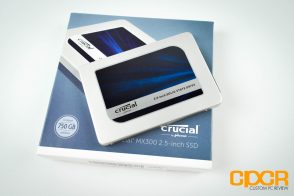 Although the Crucial MX300 is undoubtedly one of the most crucial launches for Micron, it definitely wasn’t an easy one. We first heard of the Crucial MX300 back in April when Crucial was originally planning to launch the drive, but it was pulled last minute due to lower than expected performance. Rather than launch the drive anyway, Crucial decided to go back to the drawing board to rework the firmware and relaunch the drive later on. The drive was then relaunched back in June with the new firmware which is what we have today.
Although the Crucial MX300 is undoubtedly one of the most crucial launches for Micron, it definitely wasn’t an easy one. We first heard of the Crucial MX300 back in April when Crucial was originally planning to launch the drive, but it was pulled last minute due to lower than expected performance. Rather than launch the drive anyway, Crucial decided to go back to the drawing board to rework the firmware and relaunch the drive later on. The drive was then relaunched back in June with the new firmware which is what we have today.
Despite the additional work done on the firmware, performance on the Crucial MX300 is still average at best. Despite the faster quadruple plane 3D NAND, the lack of NAND dies onboard the 750GB drive combined with a slower 4-channel Marvell controller just doesn’t provide enough parallelism to achieve the level of performance you’d find on competing mainstream drives. While the Crucial MX300 does perform better than your average TLC NAND based SSD, it still has a long way to go before reaching similar performance to its biggest competitor, the Samsung 850 EVO.
| Manufacturer | Crucial | ||||
|---|---|---|---|---|---|
| Model | MX300 | ||||
| Model Number | CT275MX300SSD1 | CT525MX300SSD1 | CT750MX300SSD1 | CT1050MX300SSD1 | CT2050MX300SSD1 |
| Capacity | 275GB | 525GB | 750GB | 1TB (1050GB) | 2TB (2050GB) |
| Street Price | $72.99 | $129.99 | $177.99 | $259.99 | $549.99 |
| Price/GB | $0.27 | $0.25 | $0.24 | $0.25 | $0.27 |
| Check Pricing | Click Here | Click Here | Click Here | Click Here | Click Here |
Currently, the Crucial MX300 750GB is available online for ~$177.99 which is about $0.24/GB. This is just slightly higher than your average price for a mainstream 2D TLC NAND based SSD, but not by much. However, what 3D NAND brings to the table is capacity and Crucial has taken advantage of this by now offering capacities up to 2TB at a similar price per gigabyte range. Prior to the Crucial MX300, Samsung’s 850 EVO was pretty much the only option for anything larger in capacity than 1TB and while it’s a very well priced drive, the Crucial MX300 is clearly more cost effective. As Micron continues to ramp up production of 3D NAND and begins rolling out their 2nd generation 3D NAND, I can see prices further dropping as we head into 2017 and beyond.
As the first drive based on Micron’s 3D NAND, the Crucial MX300 serves its purpose well. Depending on how the new MX300 performs over the next couple years, we should have a pretty good idea of whether or not there will be any issues with Micron’s 3D NAND. Only time will tell for that one. Unfortunately performance still isn’t fully there at the moment which is something that I foresee Crucial working on for the next iteration of the MX series. This should also be less of an issue with higher capacities which allow greater parallelism from additional dies. Prior to FMS this year, Micron was originally going to unveil a PCIe SSD under the Ballistix brand, but it was pulled right before launch. No word on whether that’s ever coming back, but it would definitely be nice to see what kind of performance can be achieved through Micron’s MLC 3D NAND.
Overall the Crucial MX300 750GB is an excellent choice for mainstream customers boasting Crucial’s top notch reliability, power loss protection, hardware encryption capabilities, and a great price. Performance is mediocre, but customers looking for a basic SSD for tasks such as web browsing, office work, or streaming video will find the MX300 a perfect fit for their needs. Recommended!
Sample provided by: Crucial
Availability: Amazon

